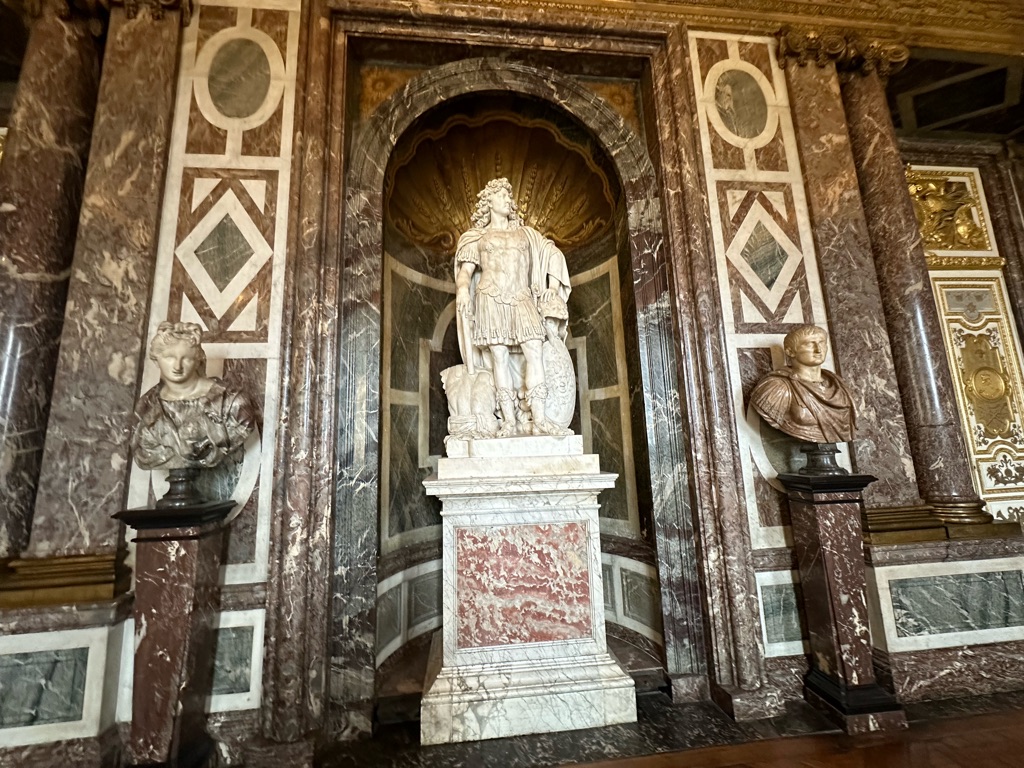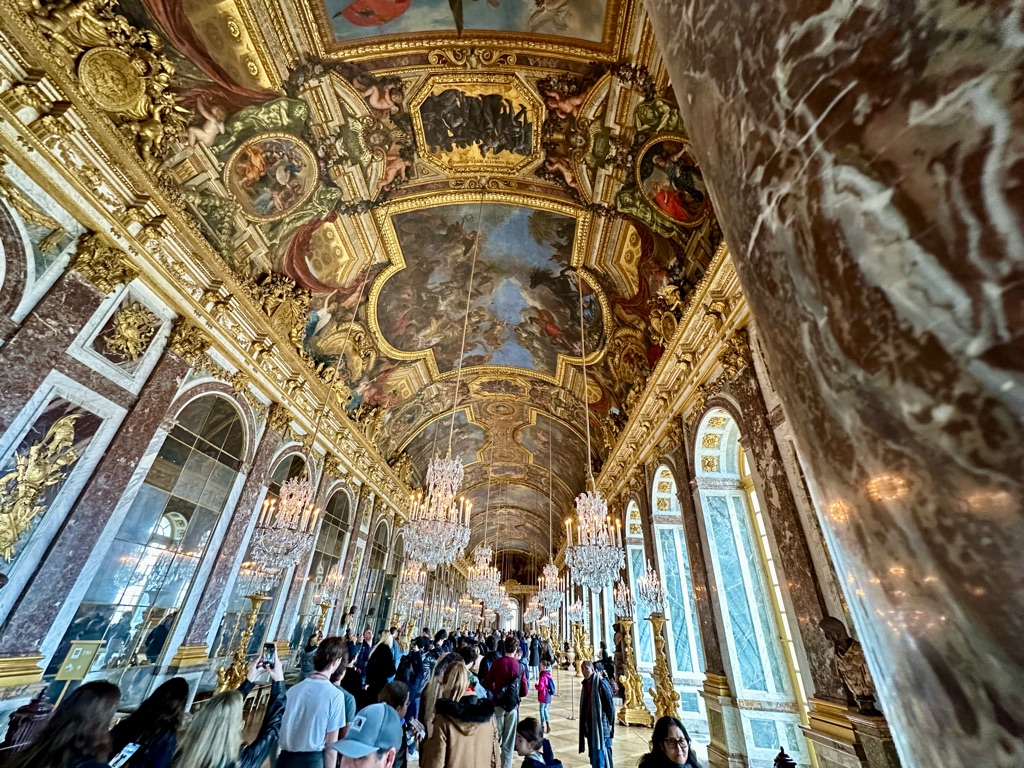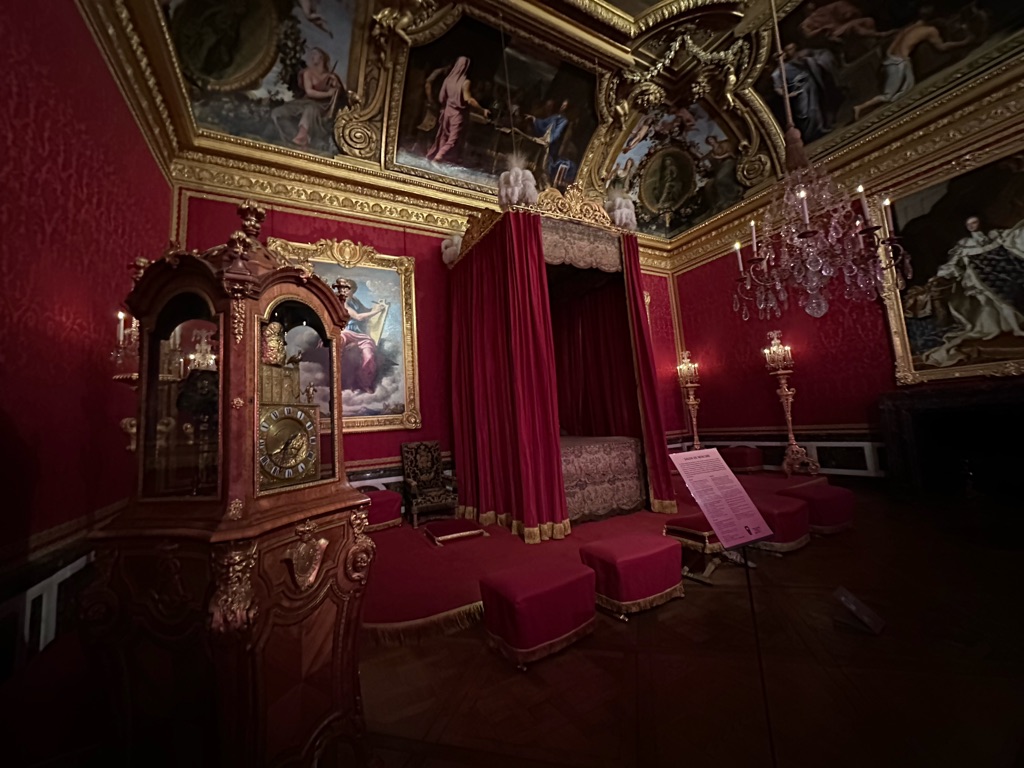






Juliet and her balcony.


After a quick tour and some free time in Verona, we reached our hotel around 7pm.
The town was originally a military base chartered in the 3rd century BC and is the home two famous literary lovebirds, Romeo & Juliet. \240While the Verona Arena held the same types of entertainment as the one in Rome.
Everyone is exhausted from traveling, so it is an early night. Tomorrow we are off to Venice!







Juliet and her balcony.


Picturesque Venice was a bit rainy and windy today. Unfortunately we didn’t get our Gondola rides. However, the group hung in there until the end of the day; they were troopers!
On tour today, we learned that the city of Venice was built in the shallow lagoon in order to protect the people from Germanic invaders. The foundation of the city was built on tree trunks driven into the sand, which made the wood solidify into stone instead of rot.
Venice became a powerful democratic republic that survived for over 1,000 years. This was mainly due to it’s control of trade in the east.
The Bridge of Sighs, St. Mark’s Basilica, the Doges’ Palace, Rialto Bridge, and Venetian glass blowing gave us plenty to remember.
Tomorrow we are moving on to Florence. \240Hopefully, we will find better weather there.

Murano Glass
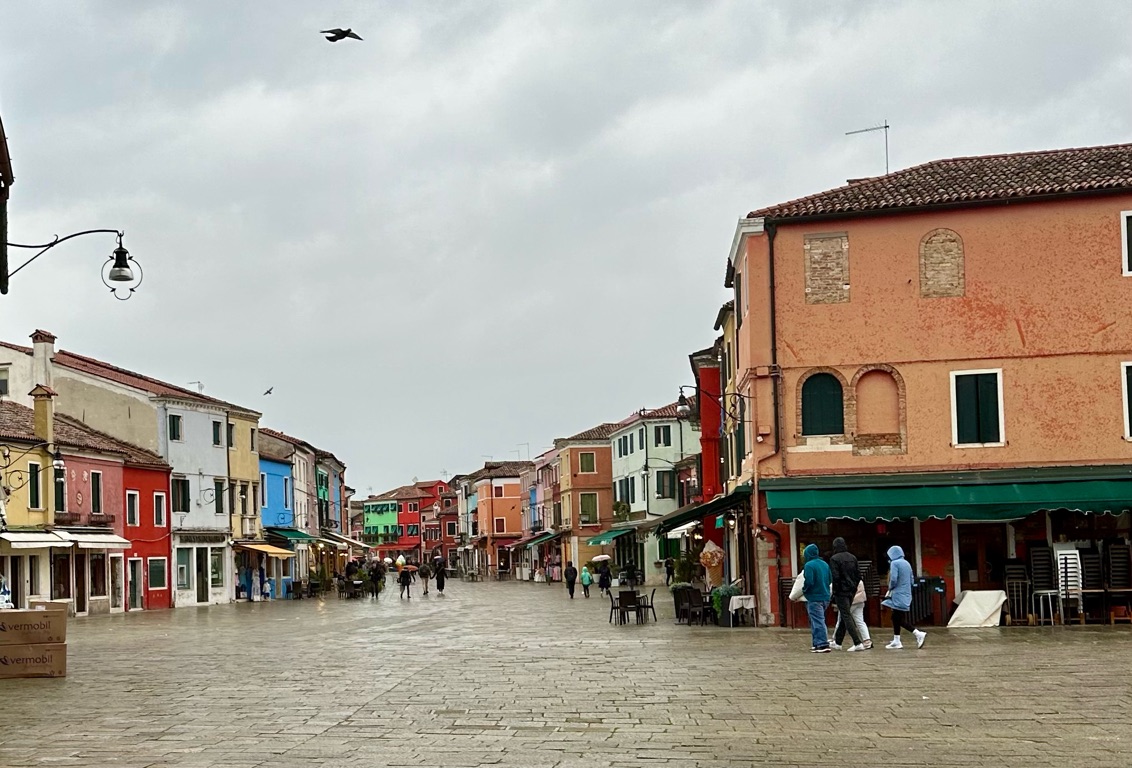
Island of Burano

Island of Burano

Island of Burano

Saint Marco’s Piazza
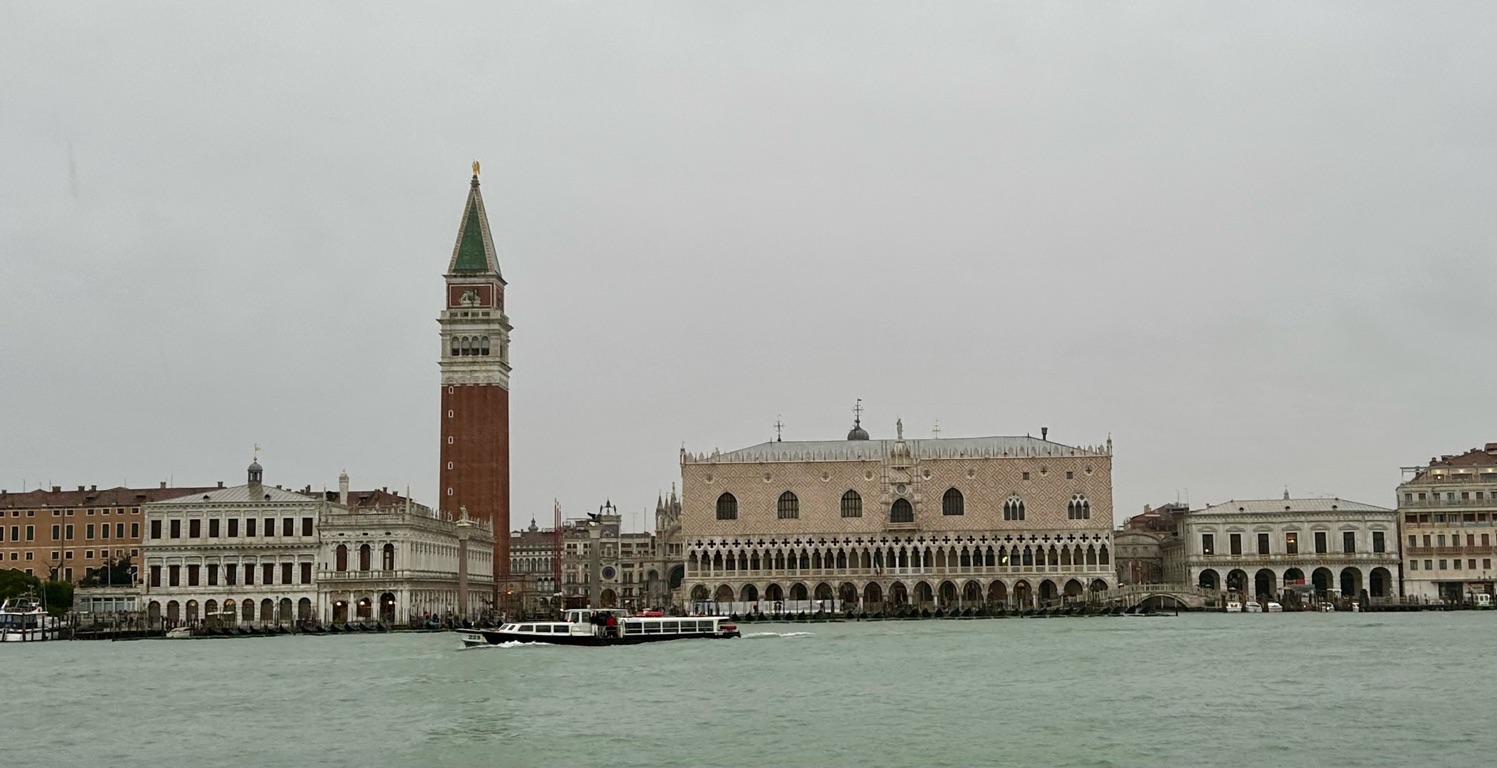

Everyone was thankful for better weather today while we toured Florence.
As we maneuvered our way through the tiny streets, we learned that Florence was originally one of Caesar’s colonies built on a hill at the confluence of two rivers.
Thanks to the powerful Medici family, who helped fund a reemergence of Greek and Roman knowledge after the dark ages, Florence is the birthplace of the Renaissance and home to some magnificent art and architecture. So much so that even Hitler couldn’t come to destroy the city or the Ponte Vecchio Bridge.
The pictures only give an idea of the immense scale of the architecture and the statues. My favorite statue is Michelangelo’s David. I don’t miss a chance to see the original.
Now we are off to explore Sienna and San Gimignano!
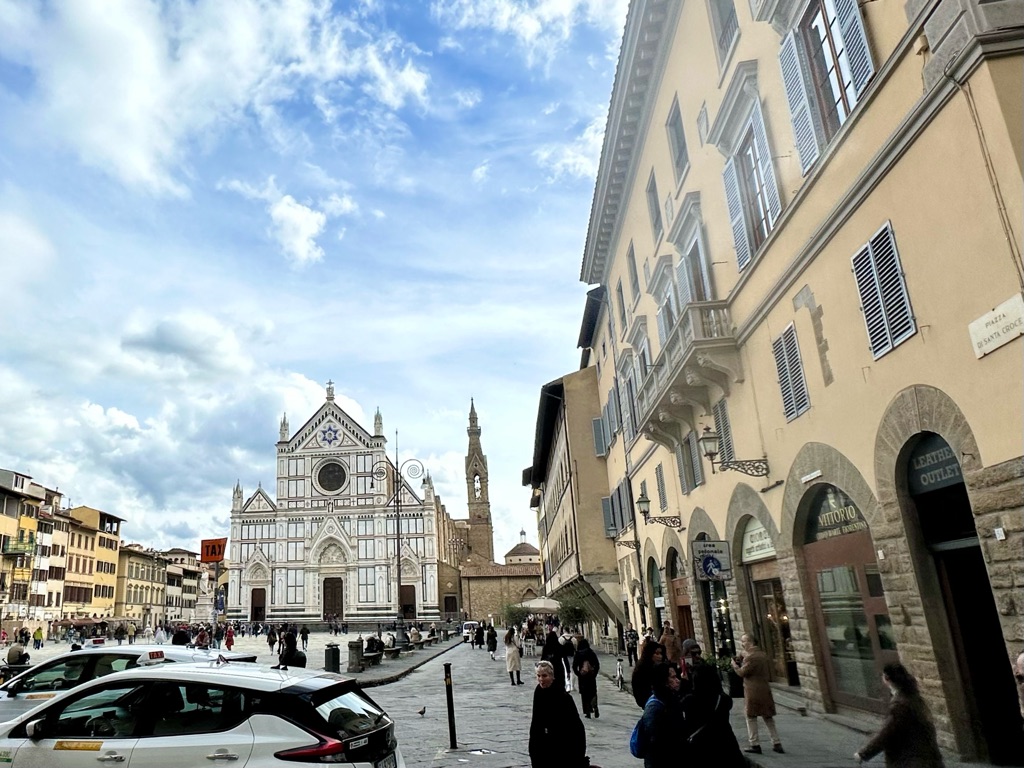
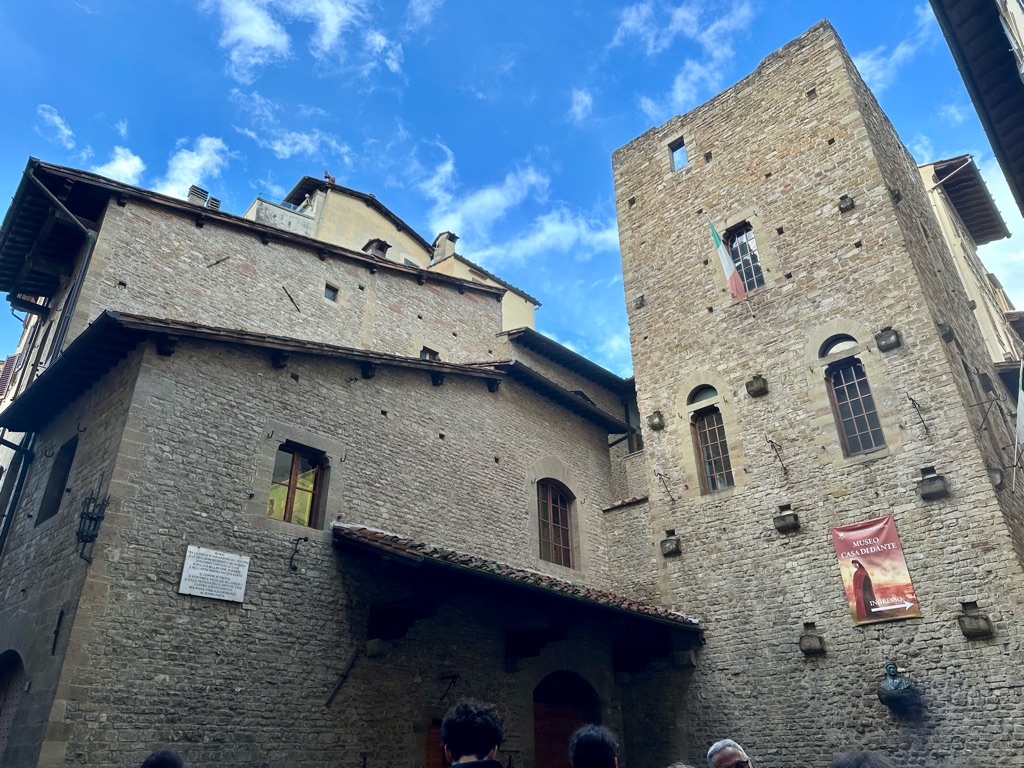
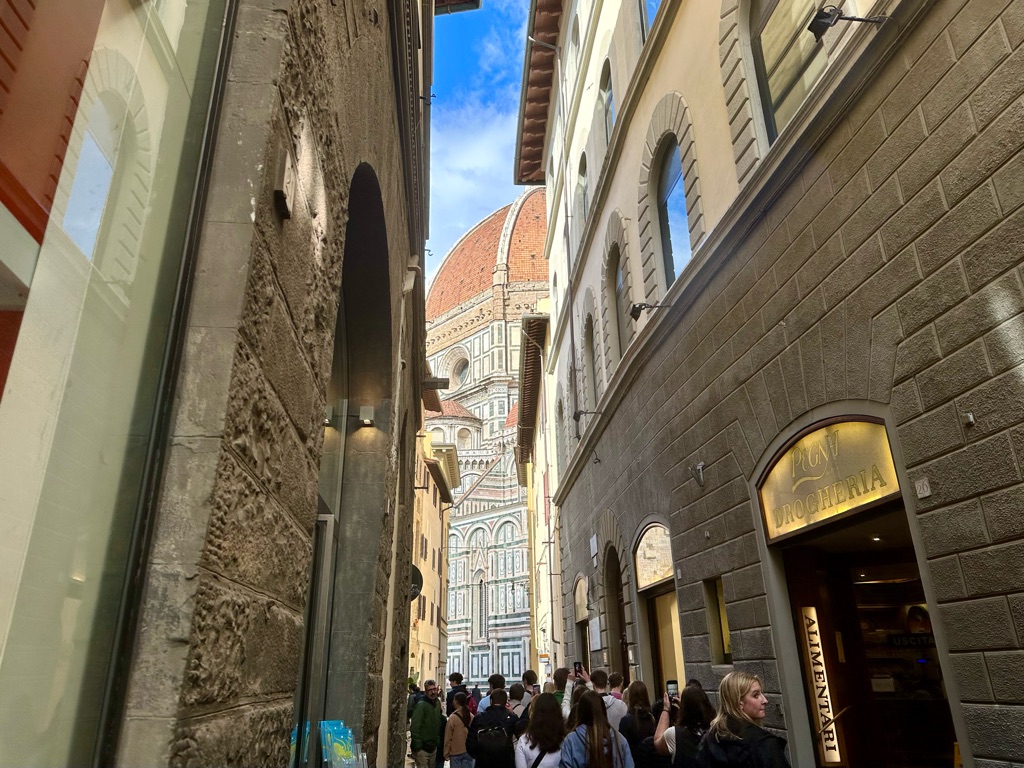

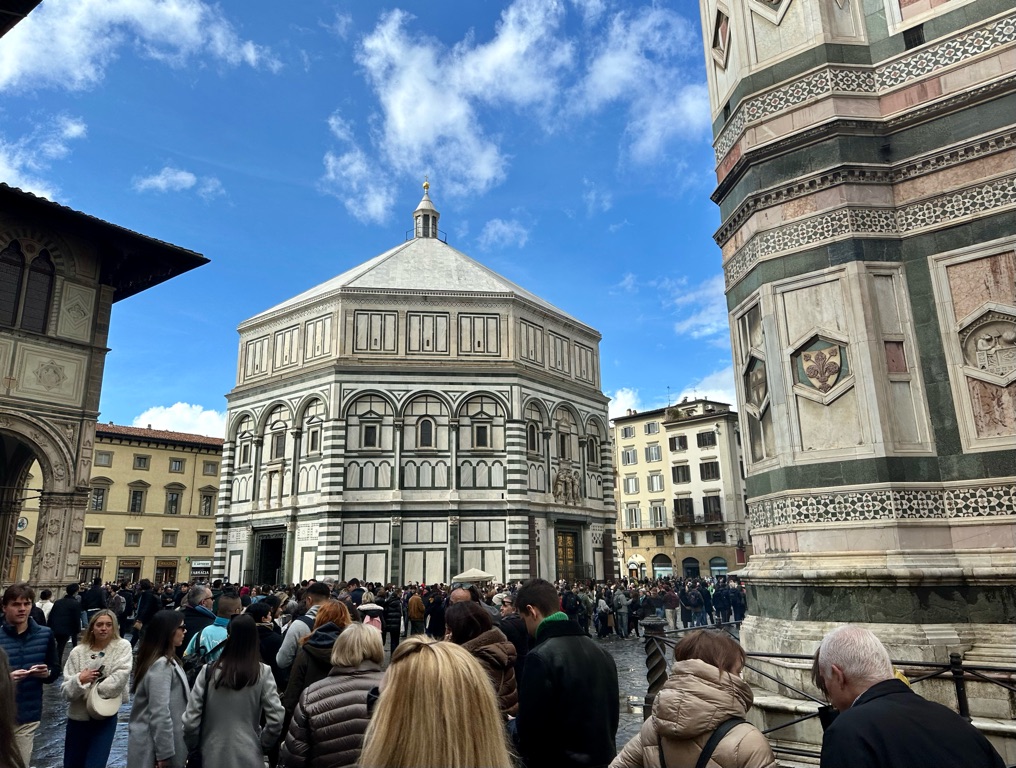
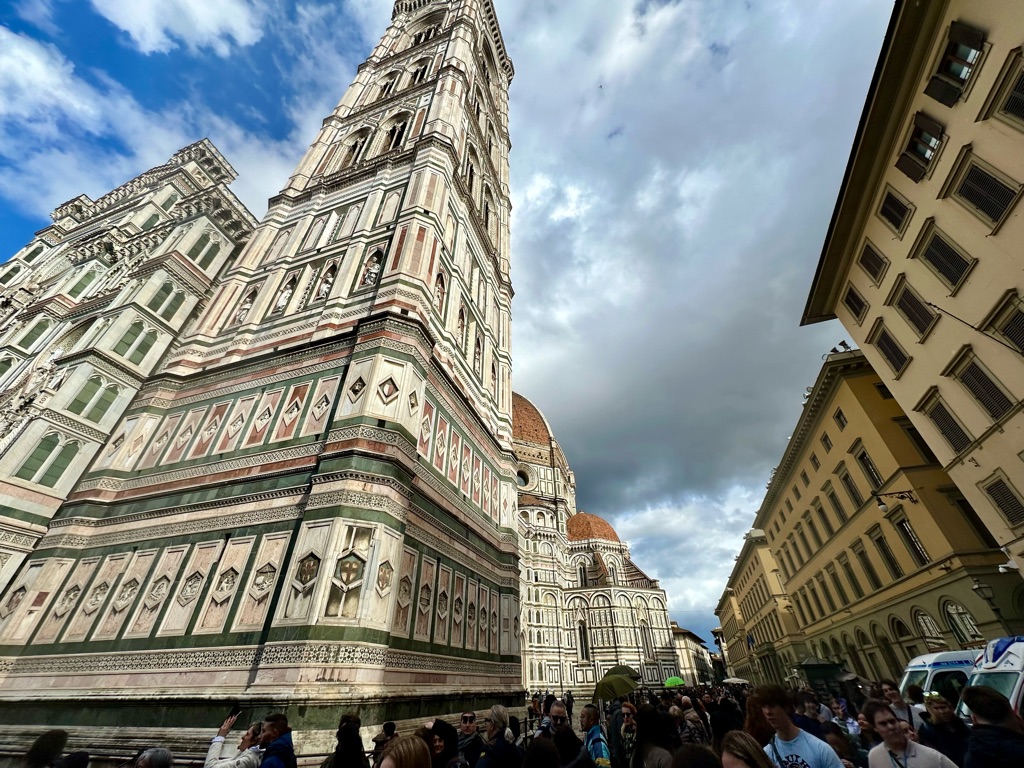
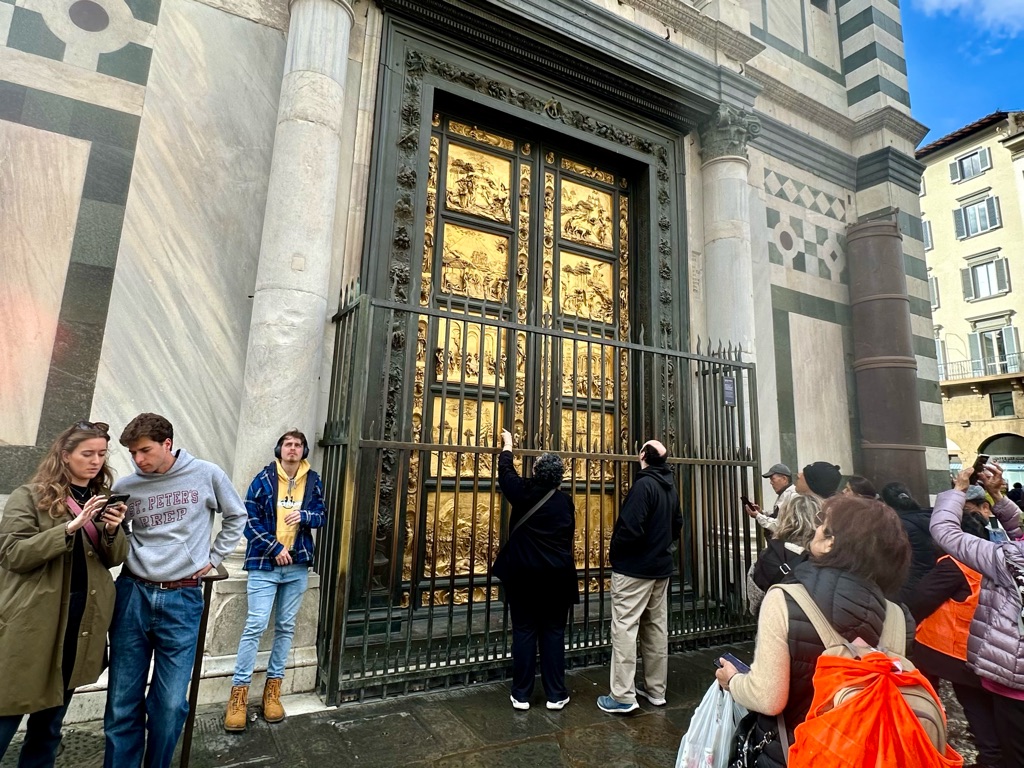
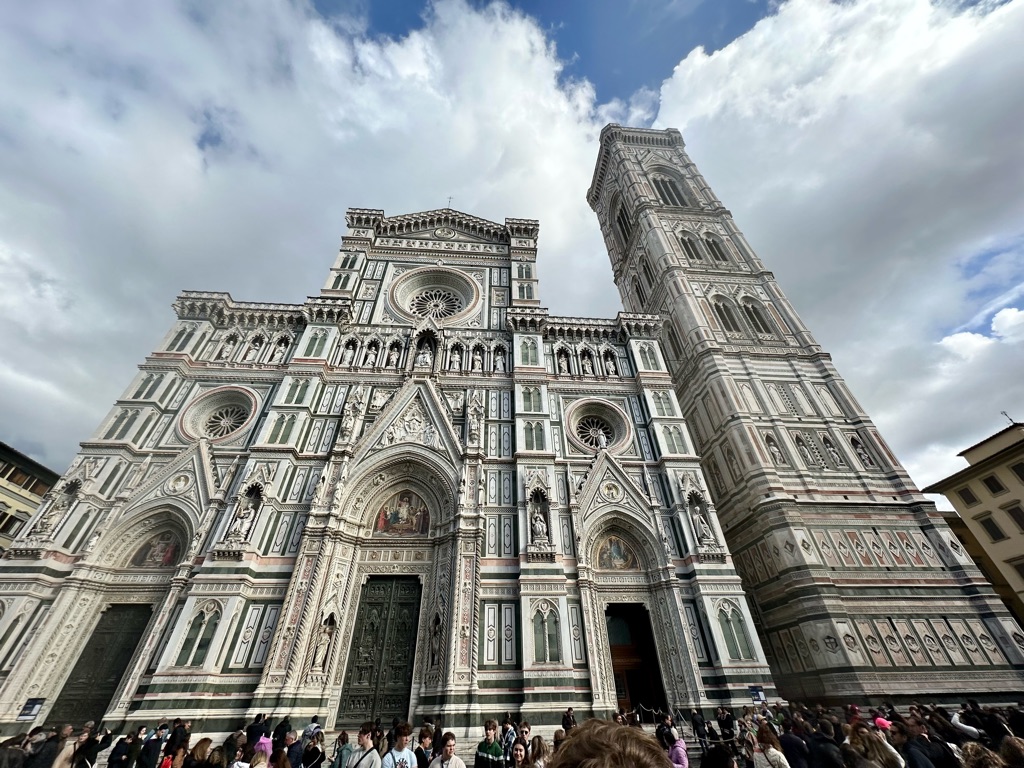
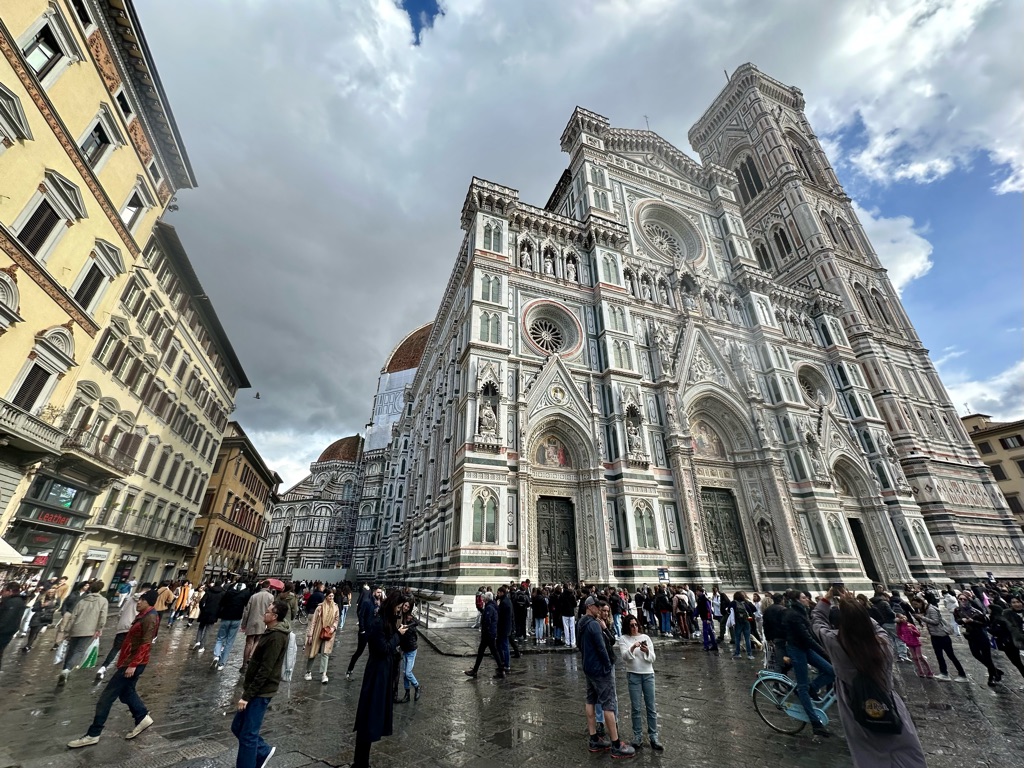
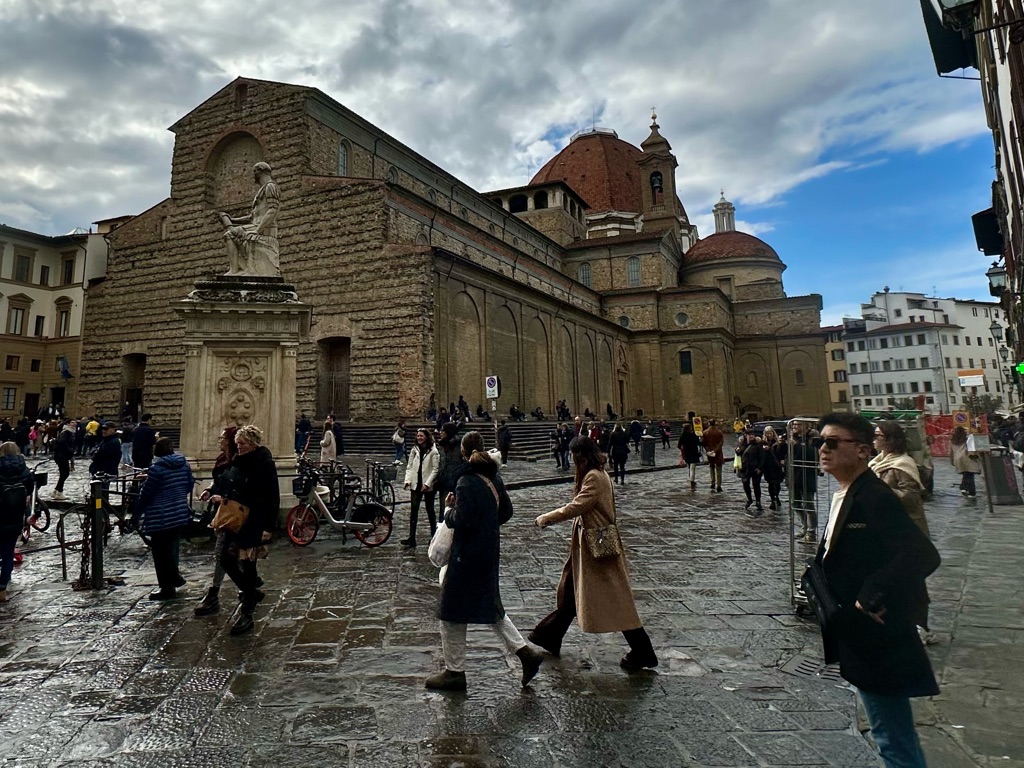
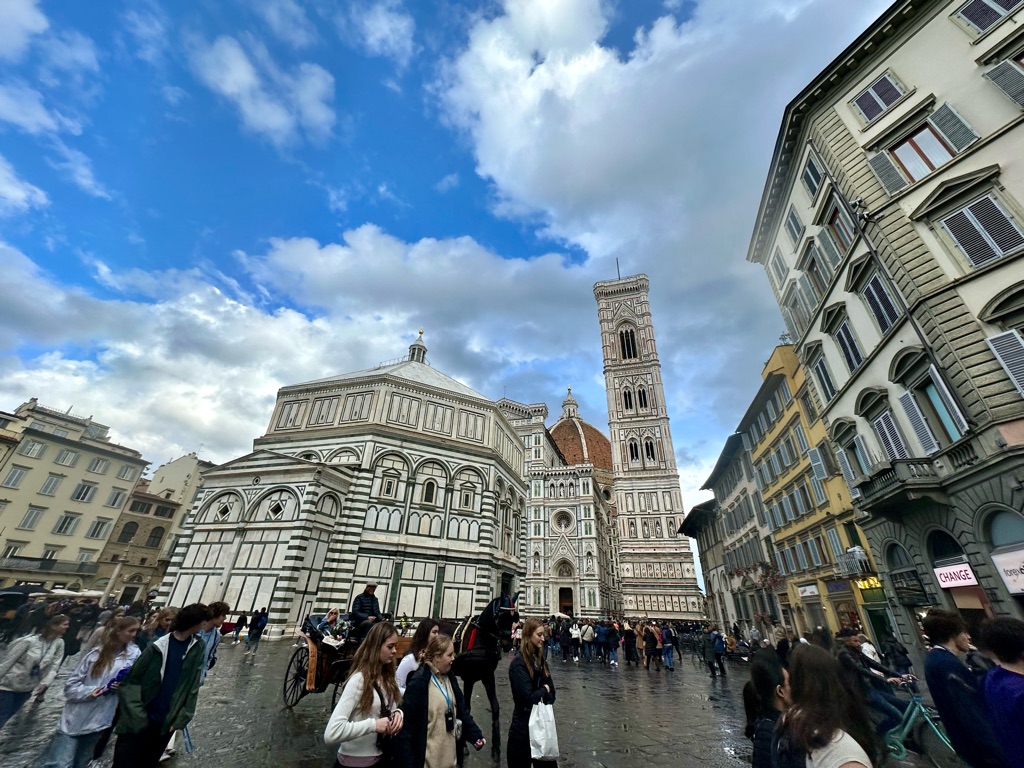
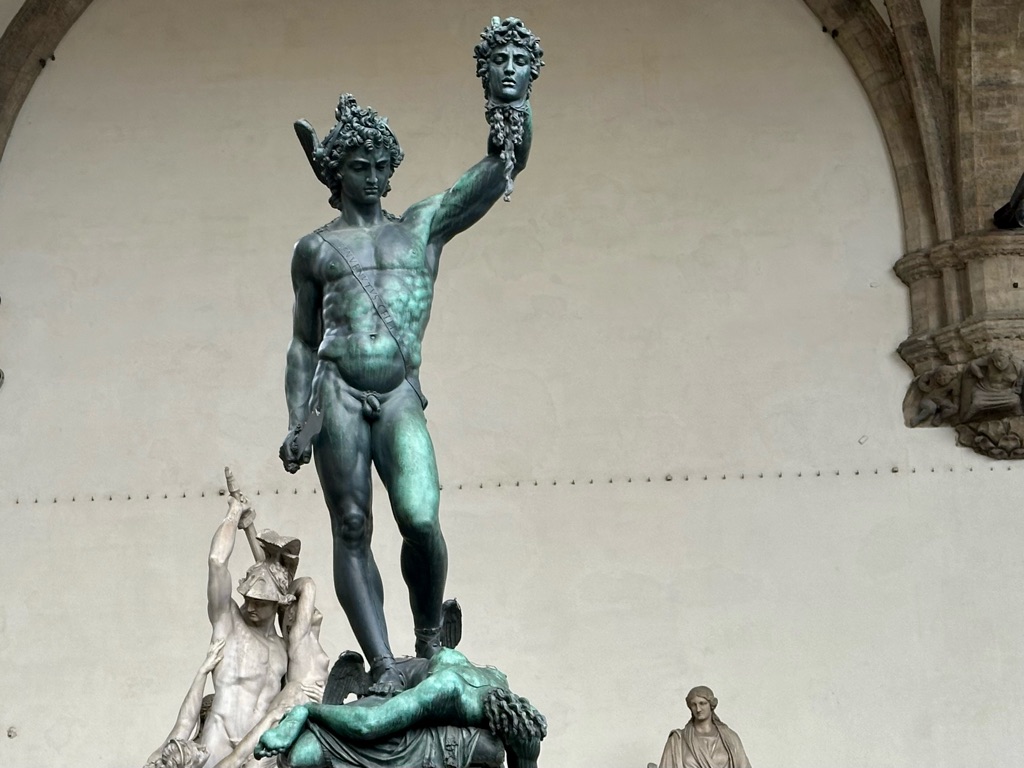

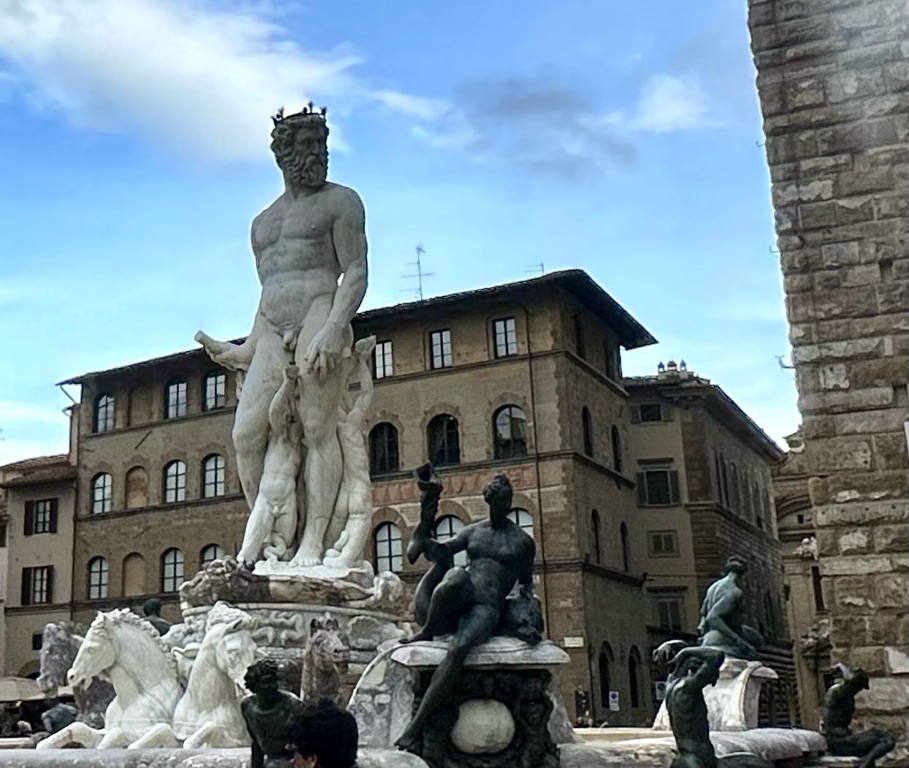



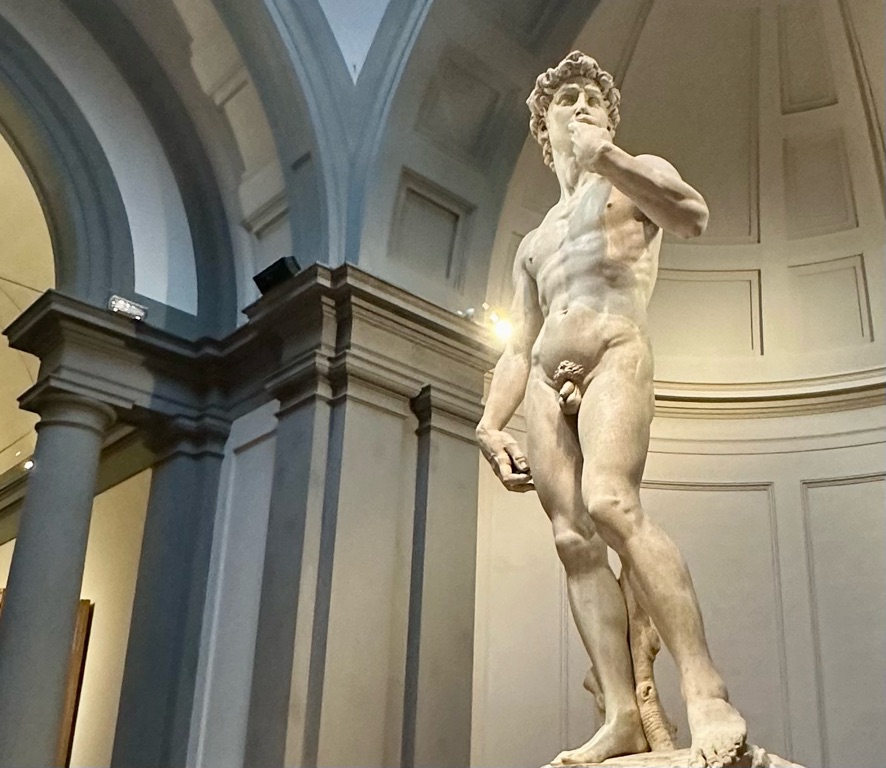
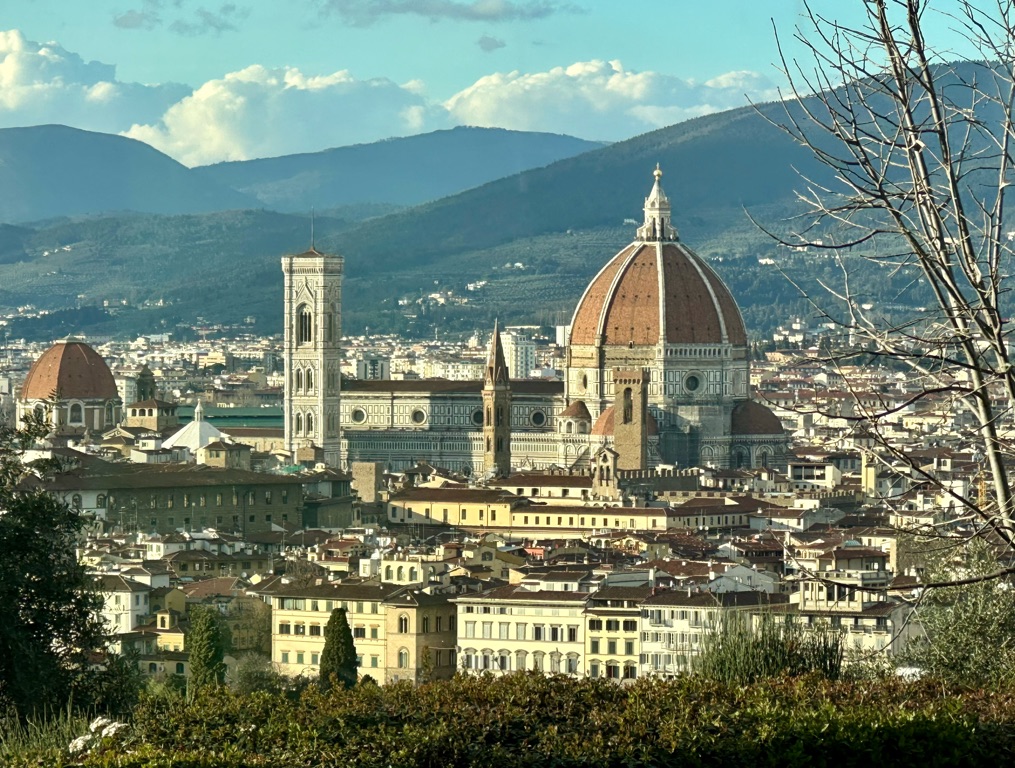
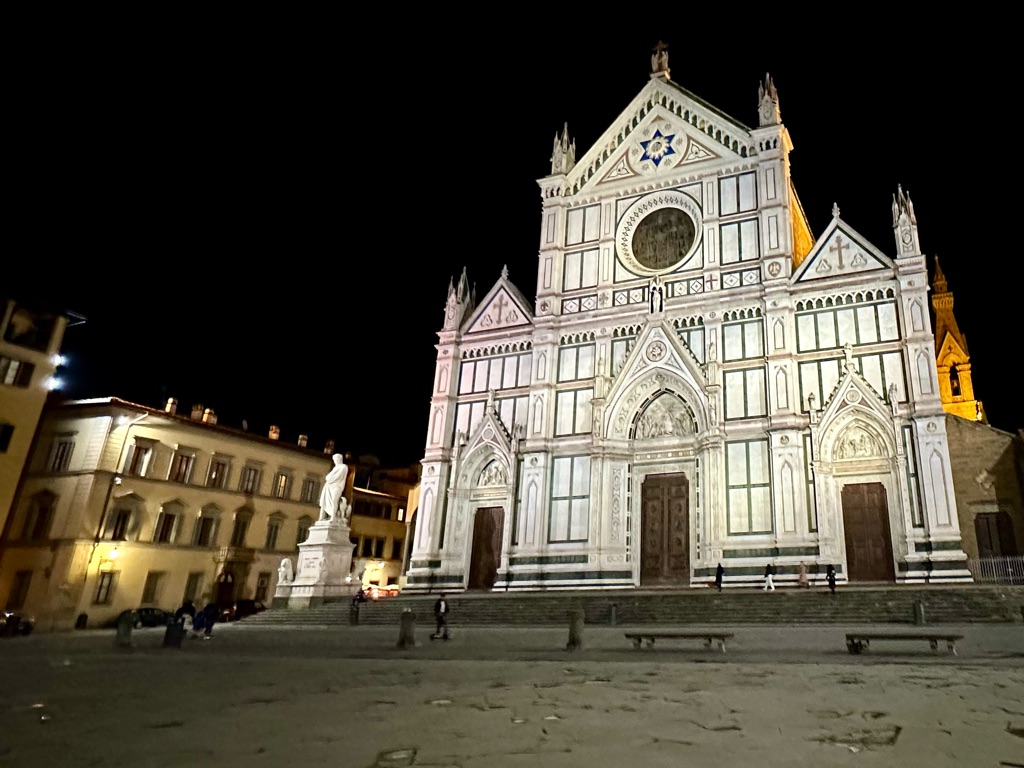
Today we saw two medieval cities, each unique in culture and tradition.
Siena was built upon three hills far from water. This was a big reason why the city was devastated by the Black Plague. But it was established as an economic center due to it’s rich banking families, in fact the oldest bank in the city dates back to the 14 hundreds.
Perhaps the most unique part of Siena’s culture is how the city is divided up into 17 different contrades, originally military companies. Twice a year, each company would enter a horse in the Corsa del Palio to race in the center square called Piazza del Campo. Jockeys from out of town would ride the horse, but really don’t matter, because the horse that crosses the finish first is the winner-with or without the jockey. The winning company will continue to celebrate for three months. The rivalry led to bribery and sabotage over the years. Nevertheless, the Palio continues to be held twice a year and brings in spectators from around the world.

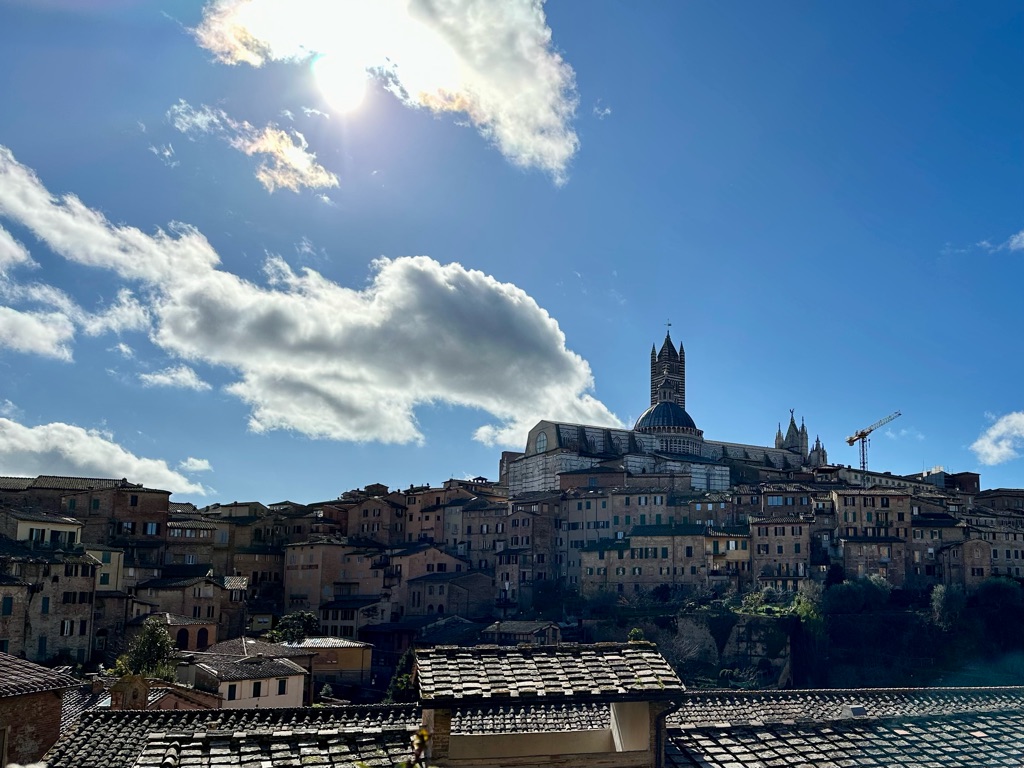

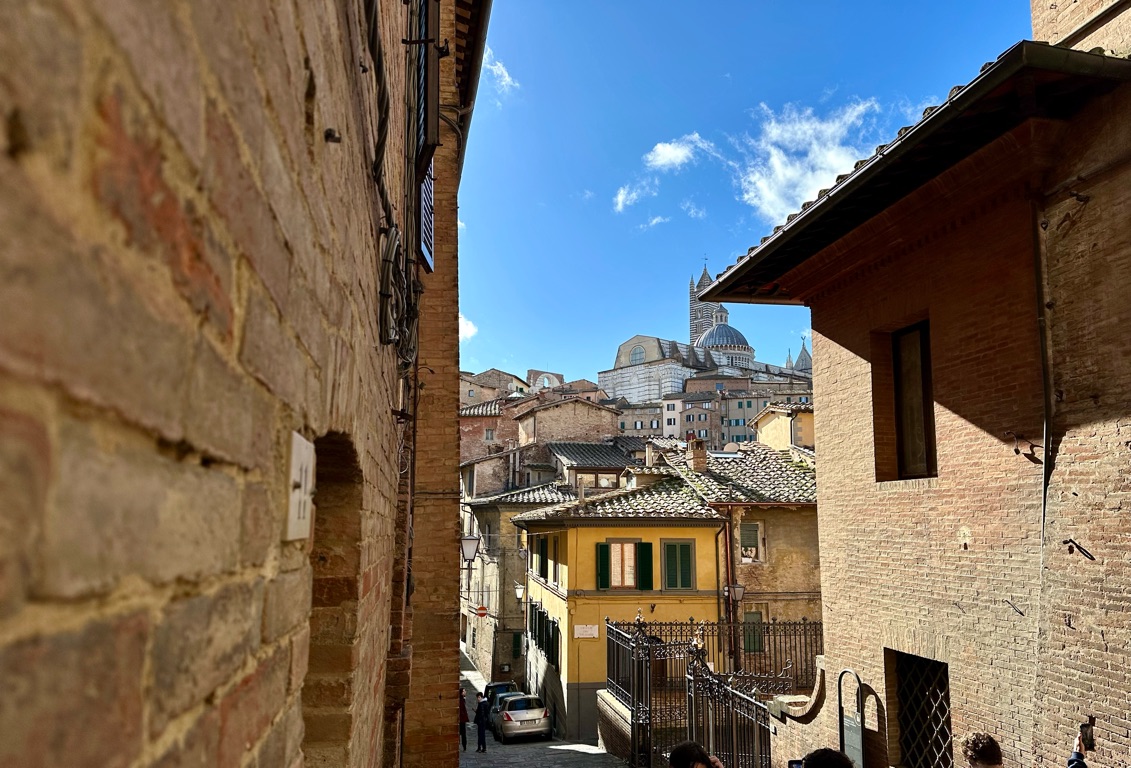
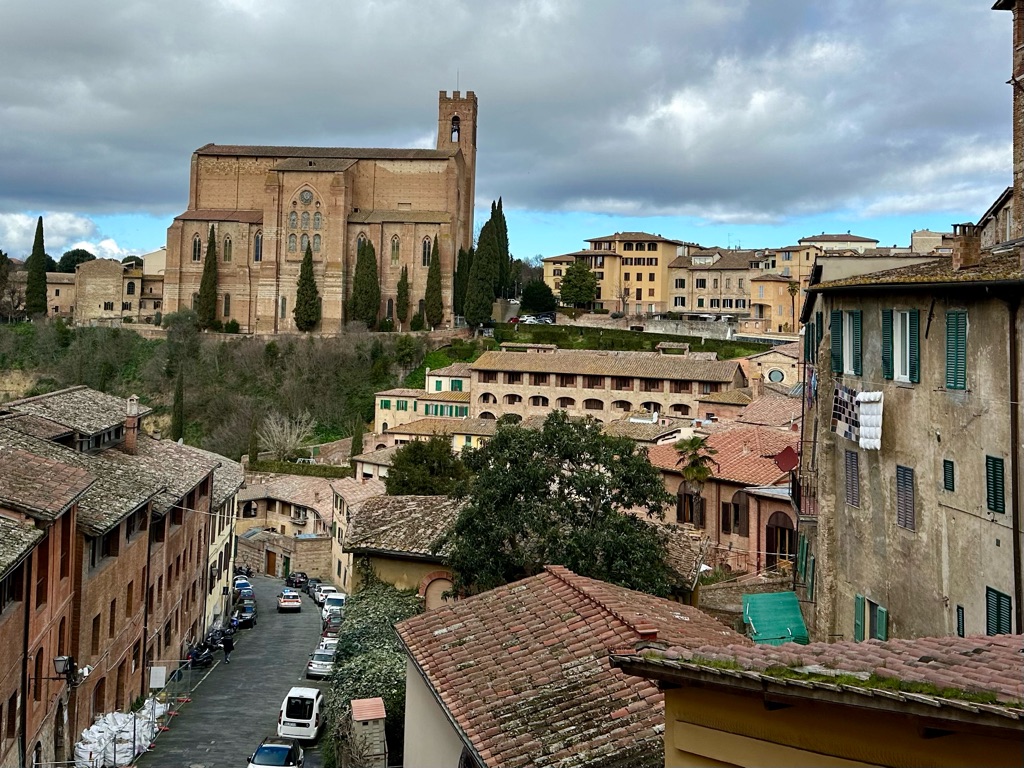

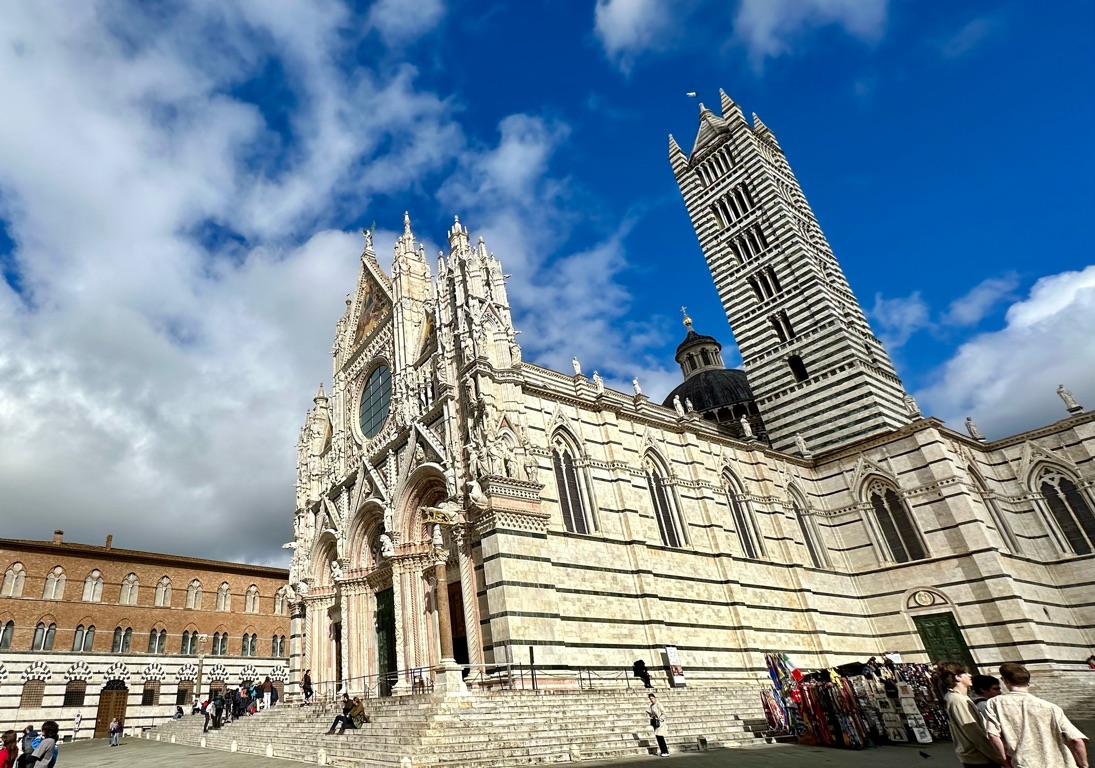


San Gimignano is known as the NYC of the Medieval times. Thirteen towers still stand tall overlooking the valleys below. There were 72 at one time.
The towers were built by the rich families to show off their wealth. Of course, each one got a little bigger than the last.
With spectacular views and the home of a gelato World Champion, it is definitely worth a visit.
Tomorrow we’ll visit Pisa, and then off to Nice, France.
Ciao!
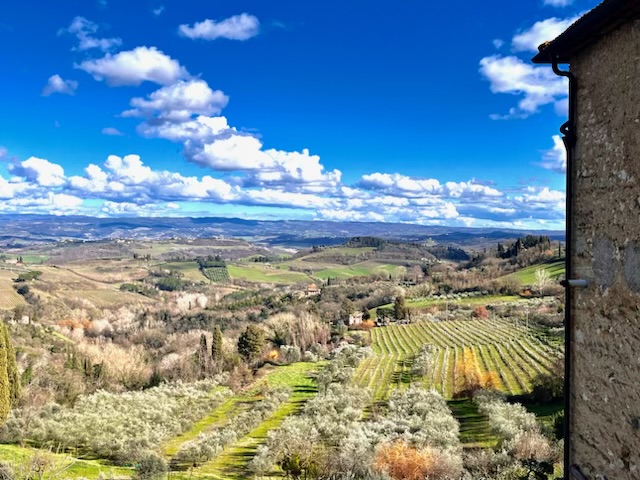
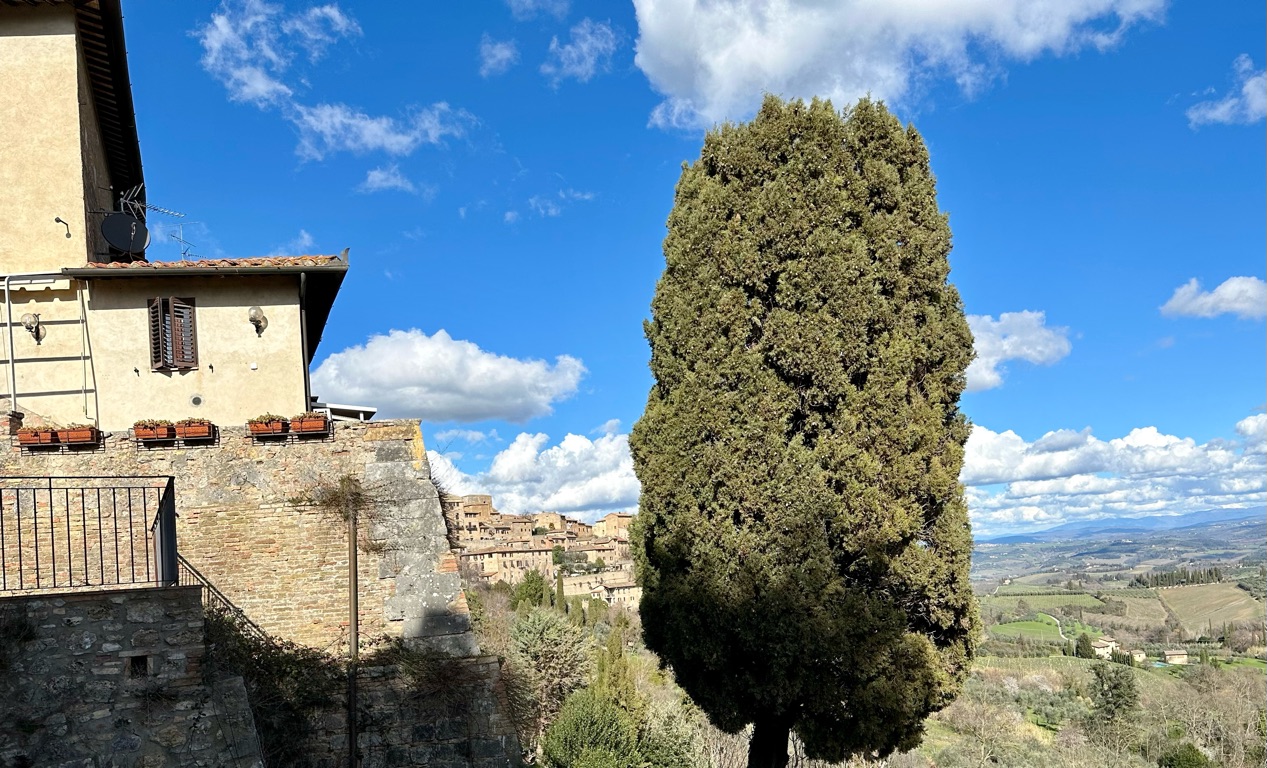





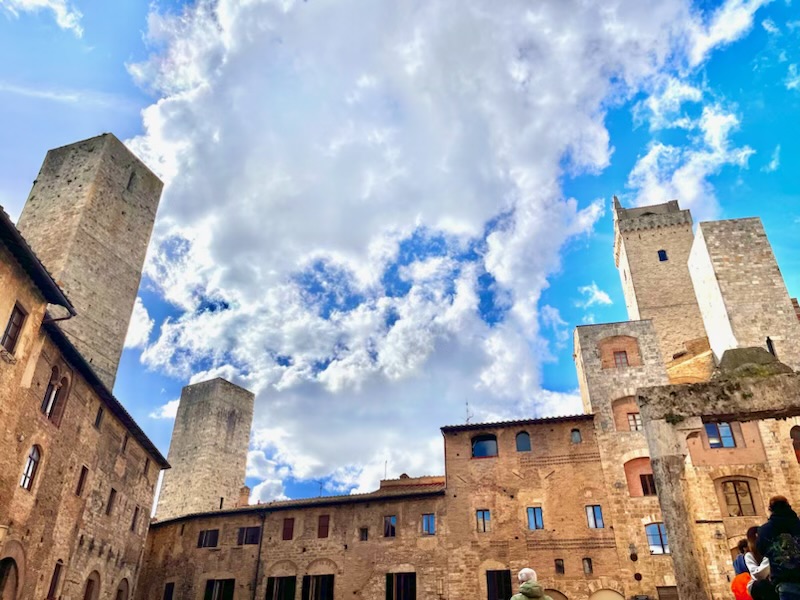
It was a good day for traveling today because we got tons of rain. However, every time we stopped there was very little. It work well for us.
Our journey to France took us first to Pisa, Italy- well known, of course, for the Leaning Tower.
Pisa was an important seaport originally and wanted to show off its might by building the Cathedral, Baptistry, and Bell Tower. Construction began in 1173 and by 1178 it was clearly leaning due to soil made of clay, sand, and shells. Even though they tried to correct the lean, it continued to shift, and it is now off by five meters.
What is less known is the acoustic perfection of the Baptistery. We only heard 30 seconds of singing, but it was enough to realize just how perfect the building was designed for acoustics.
Tomorrow we’ll get to visit Monaco and Nice, France!



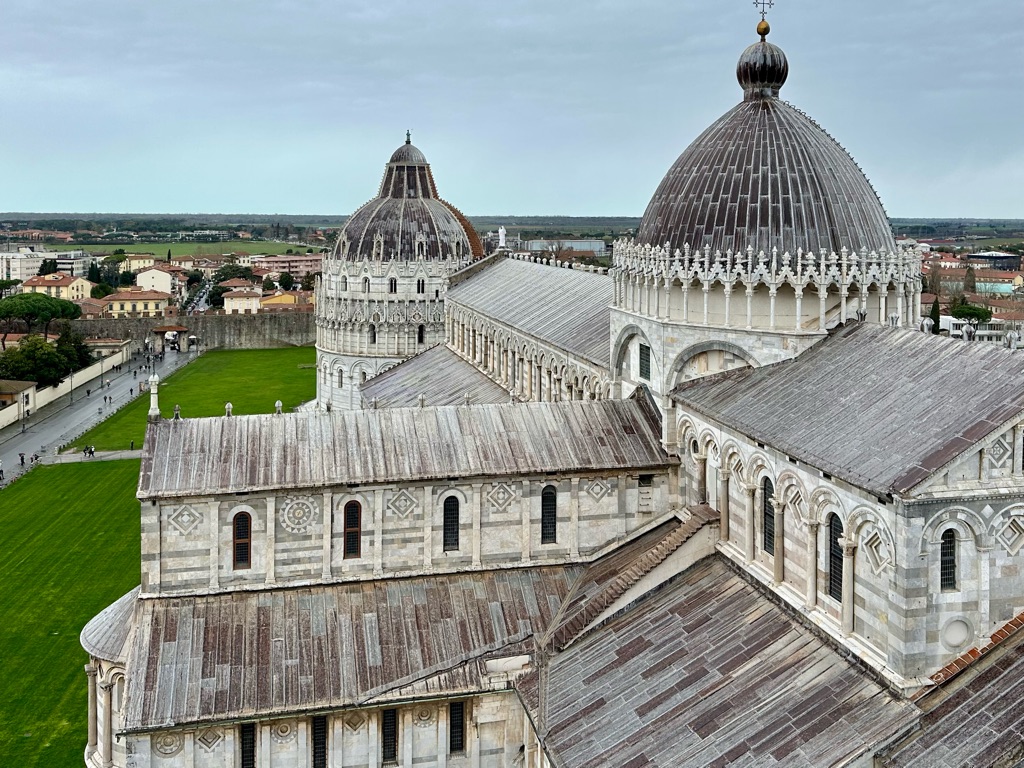
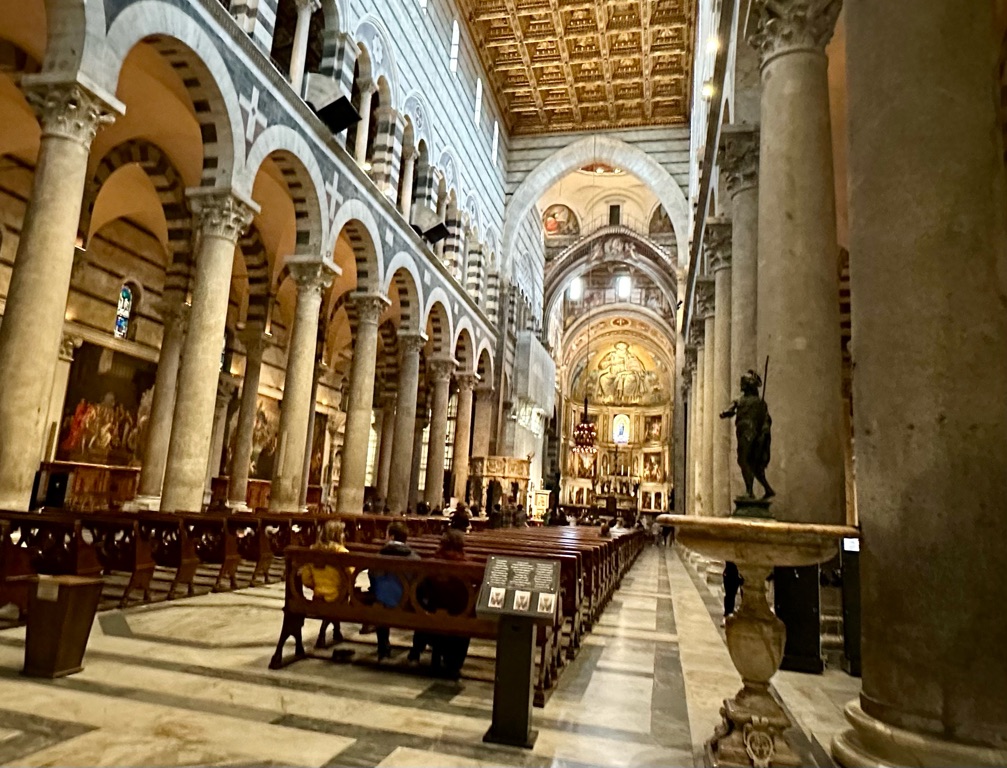
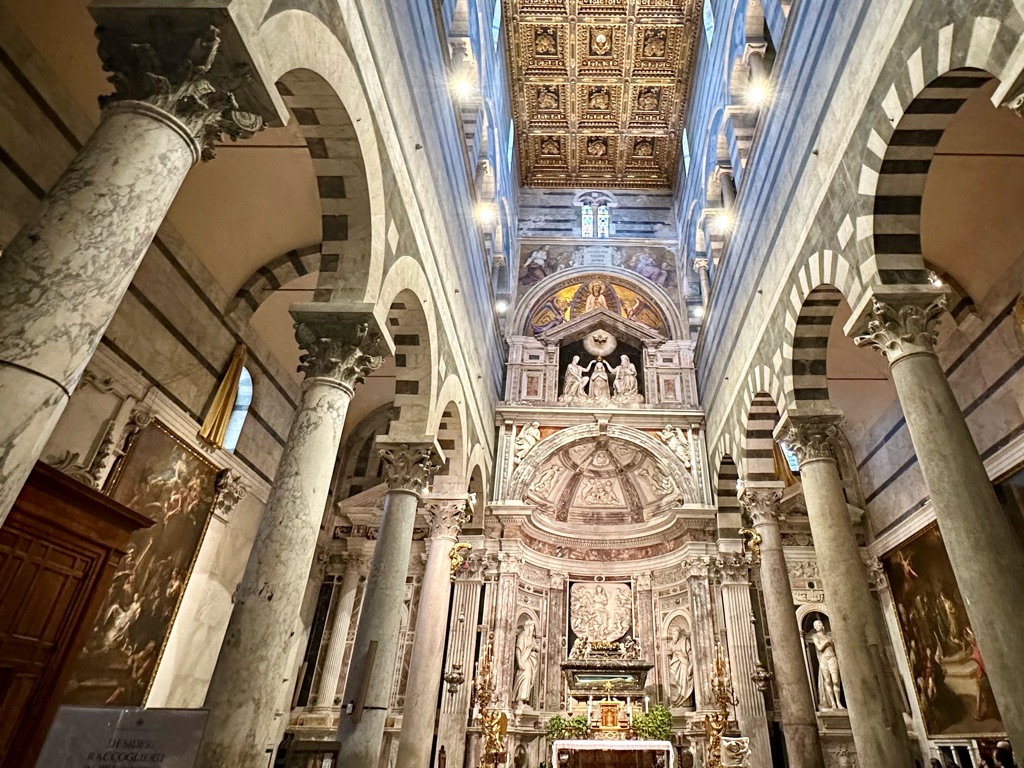
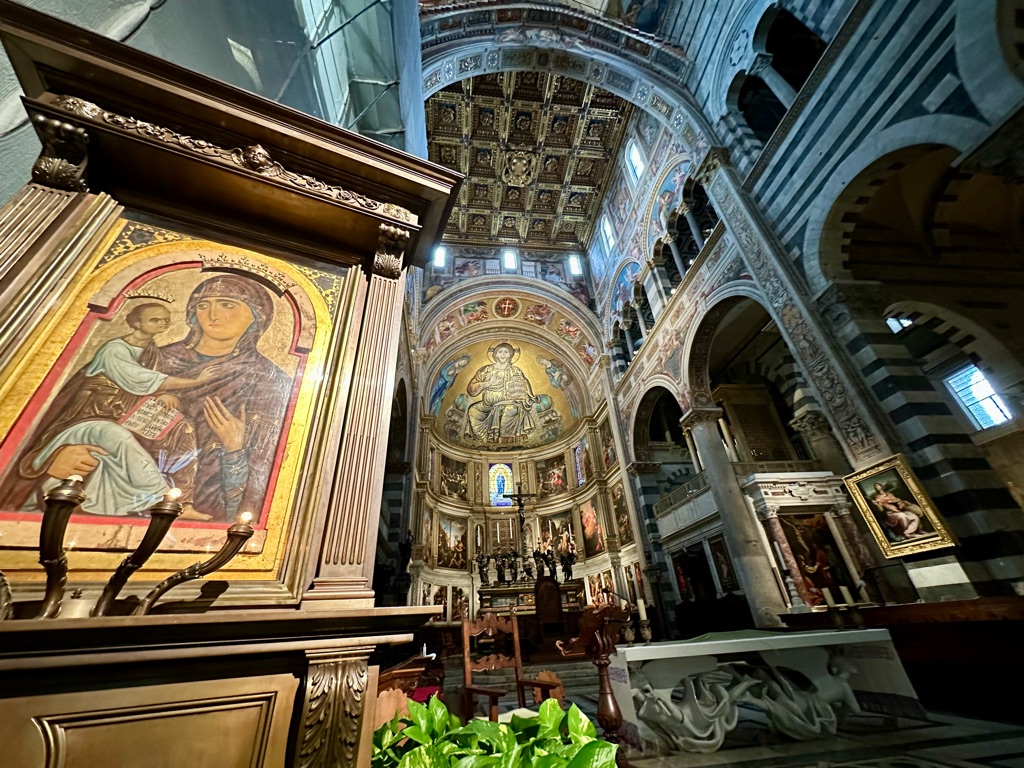
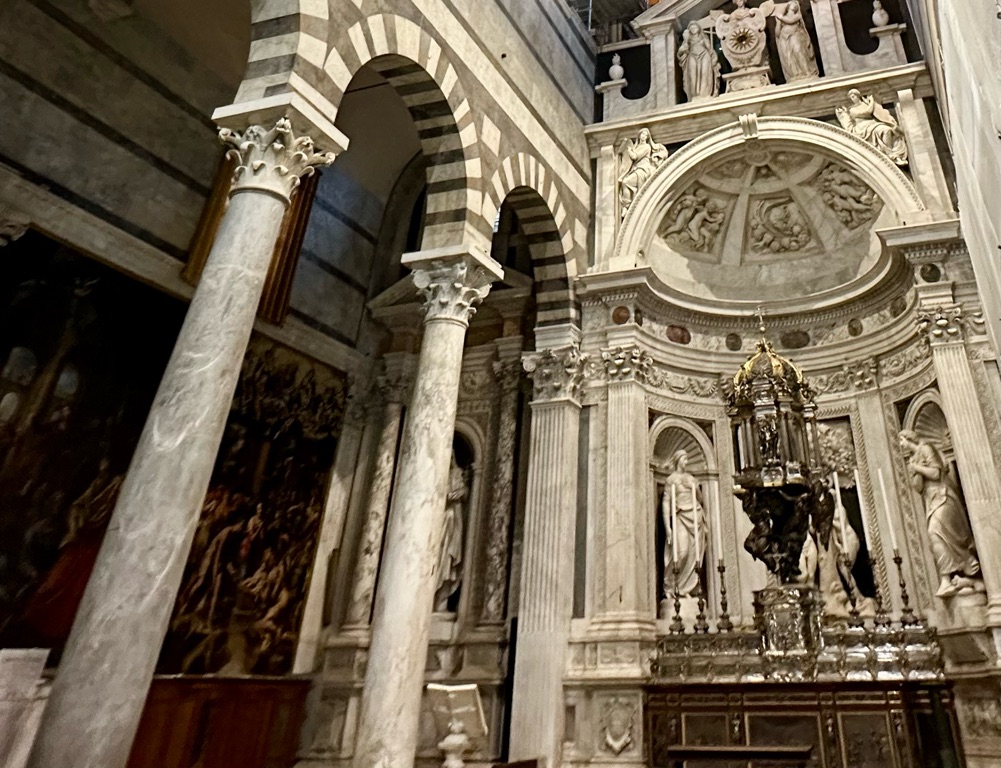

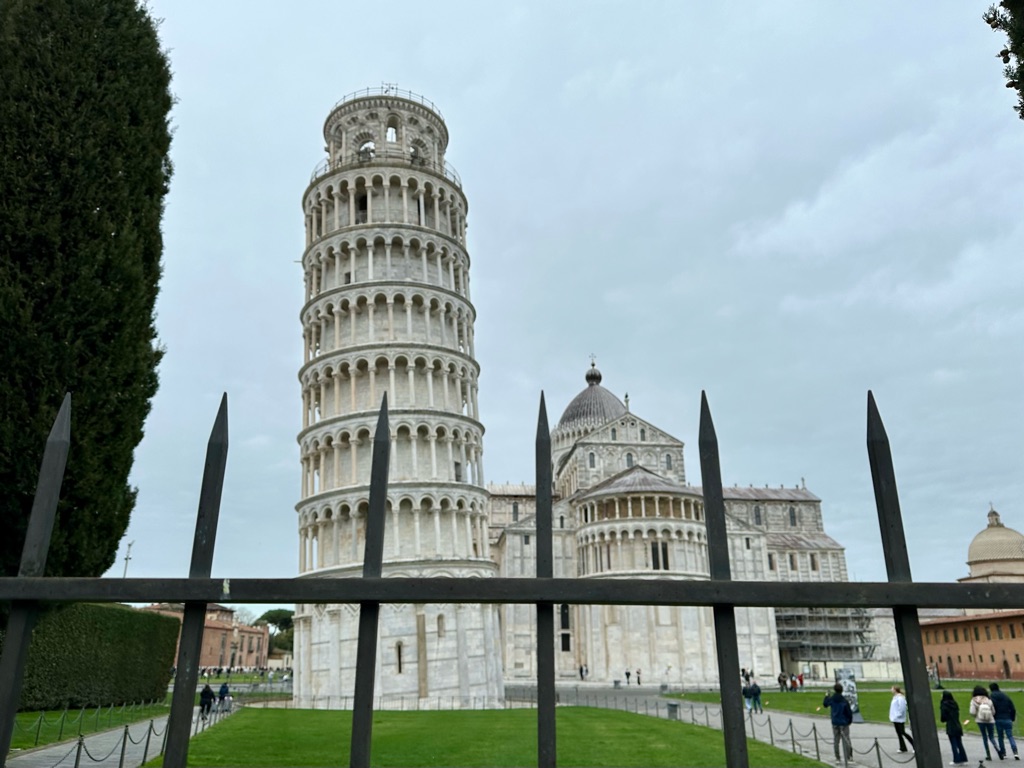
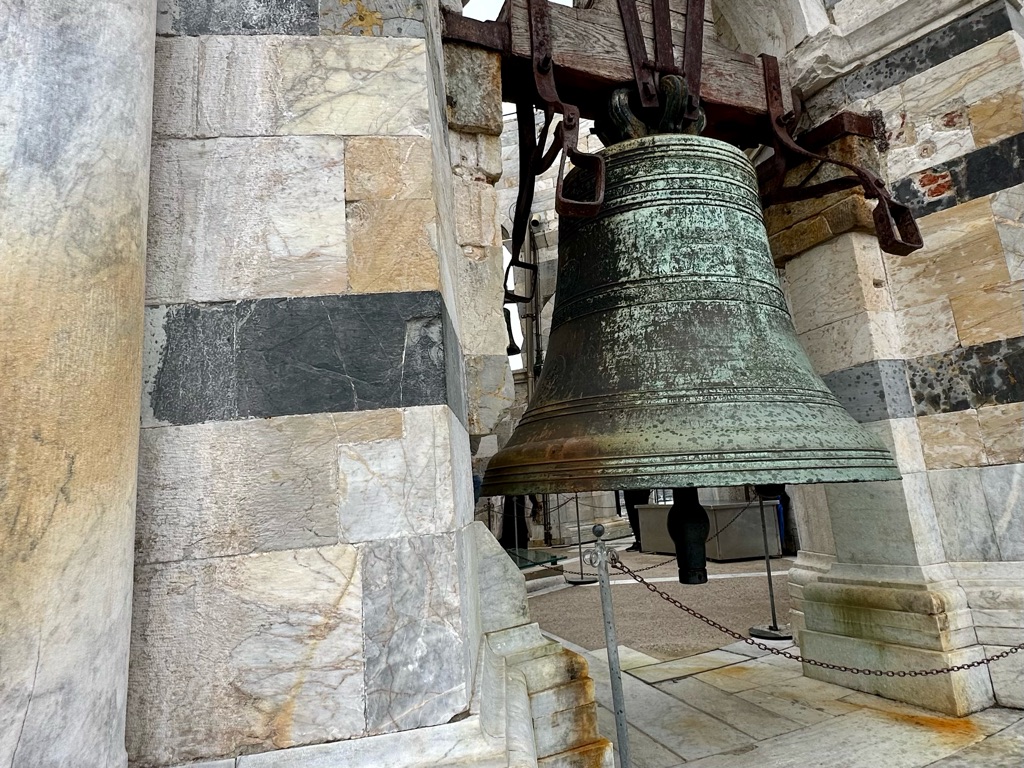
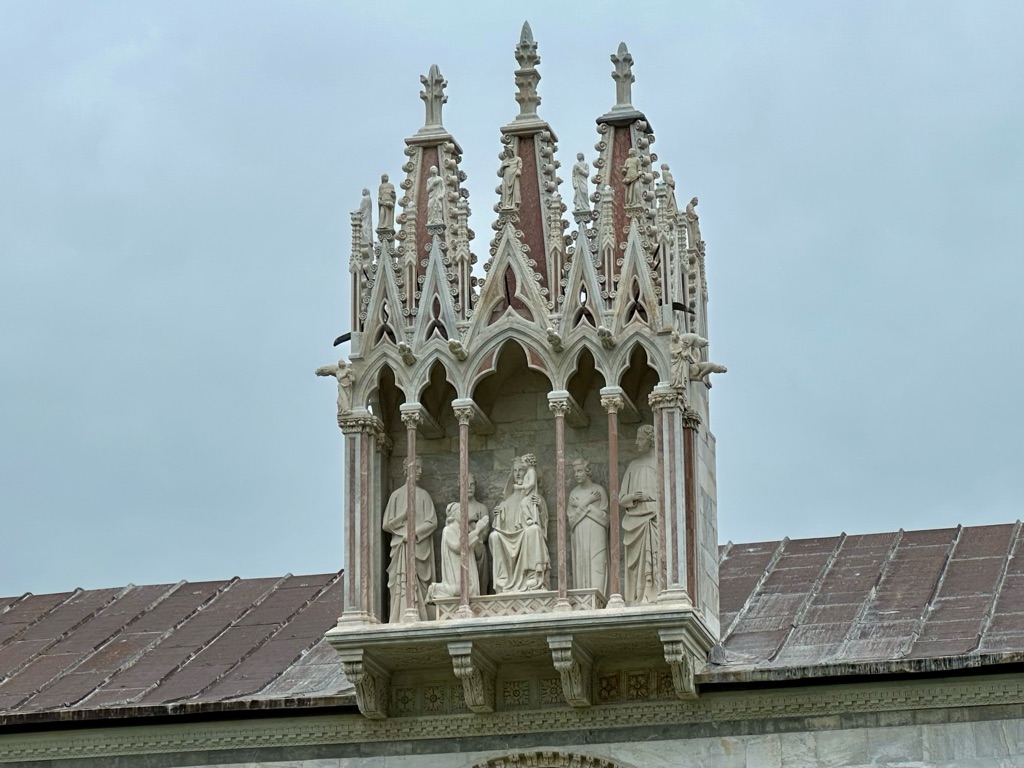


We visited beautiful Monaco situated on the coast of the Mediterranean this morning.
Monaco is an Sovereign principality that has been ruled by the Grimaldi family since 1297.
We saw the changing of the guard in front of Prince Albert’s Palace and then walked along the old and new city streets.
As a bonus, it didn’t rain all morning!!
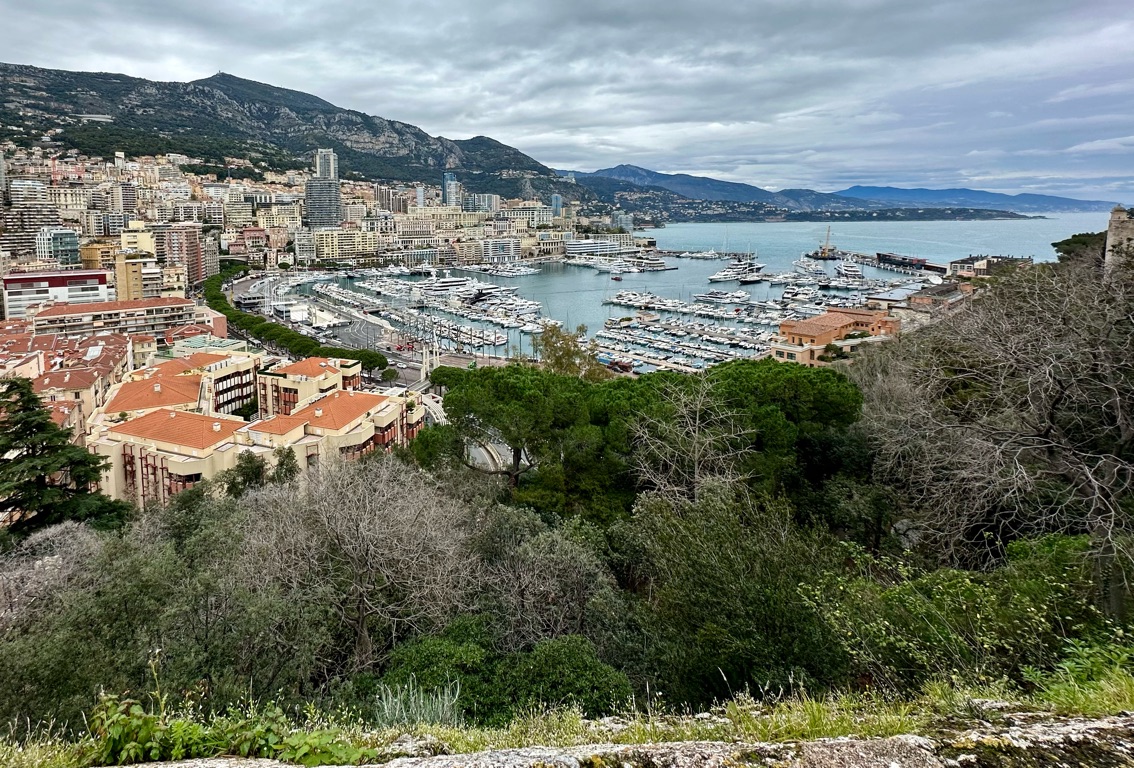

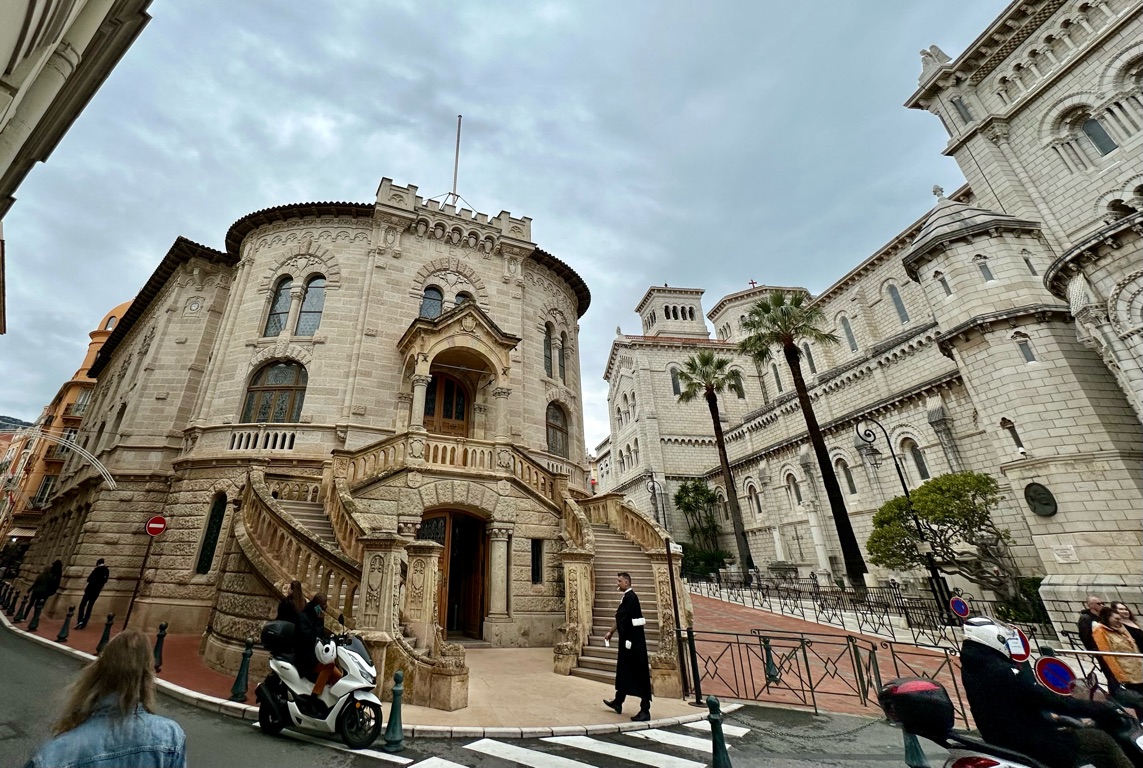
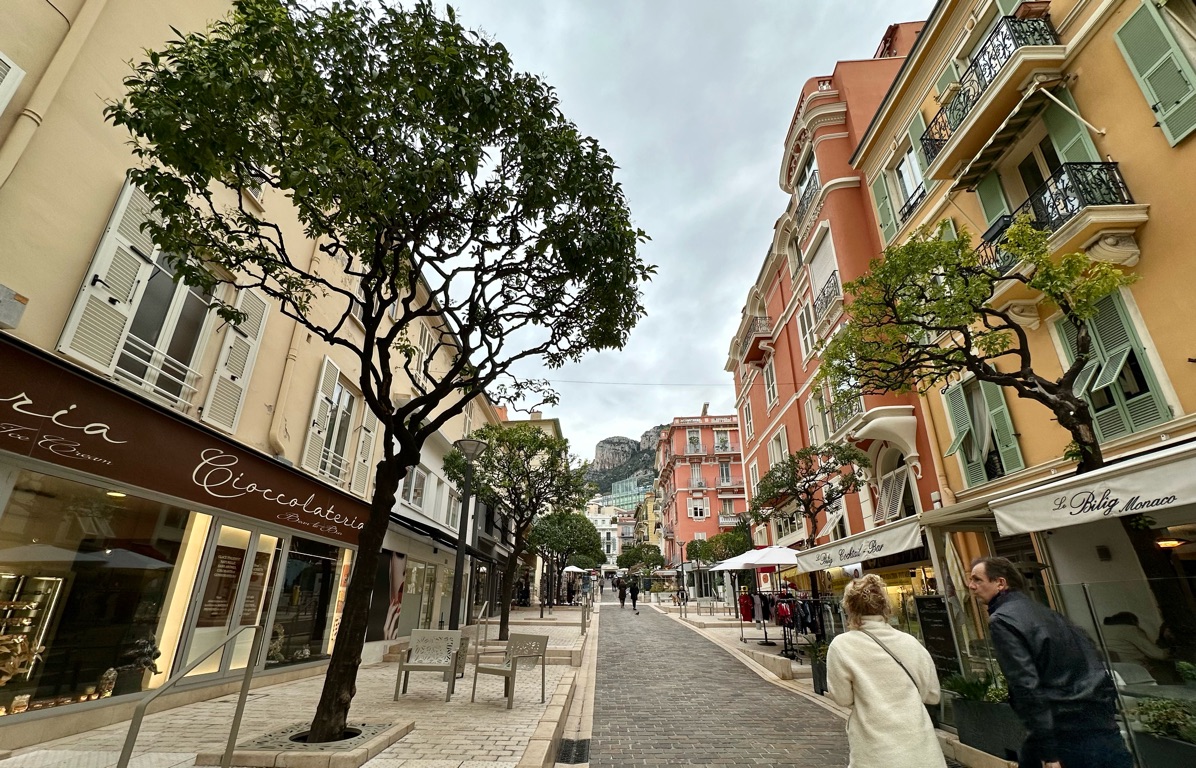




In the afternoon, we visited the major summer destination Nice. An easy nine miles away from Monaco, we stopped at a perfume factory on the way and still had plenty of time to explore. Unfortunately it started raining again, but it didn’t stop us.
Nice dates back to 350 bce. \240It is said that the name stems from the Greek word for victory- Nikē. \240Most likely the colony won a battle and the name was a tribute in remembrance.
Here are a few pictures from the afternoon.
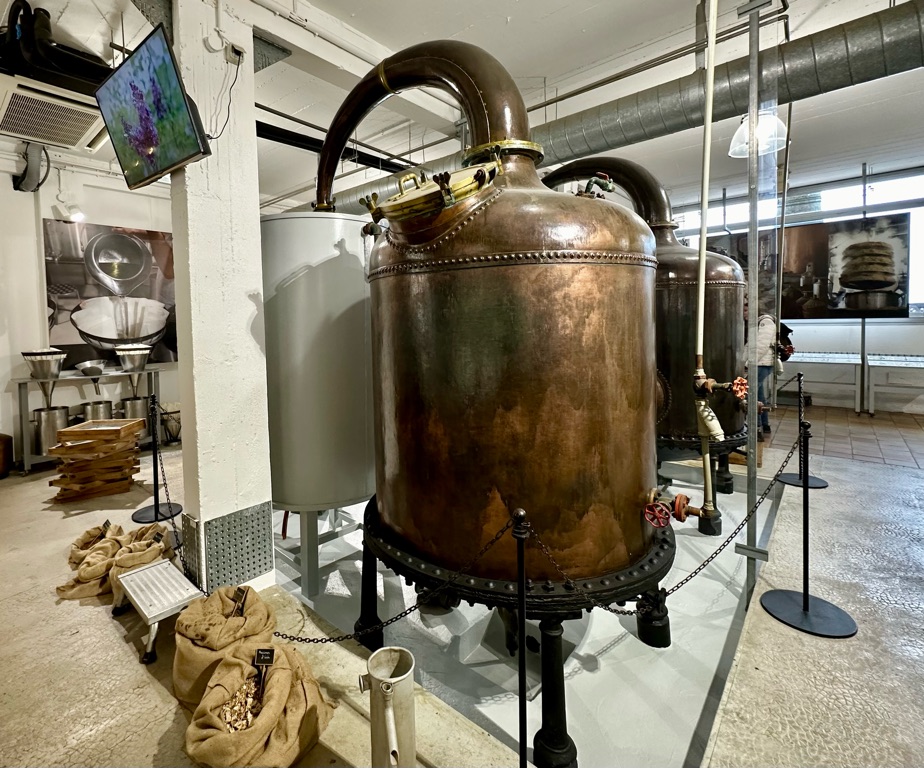


We made it to Paris today and then went promptly to the French Quarter to get some exploring in before our dinner across from Notre Dame Cathedral.
Tomorrow we’ll get a full tour of the city and the spectacular palace of Versailles.
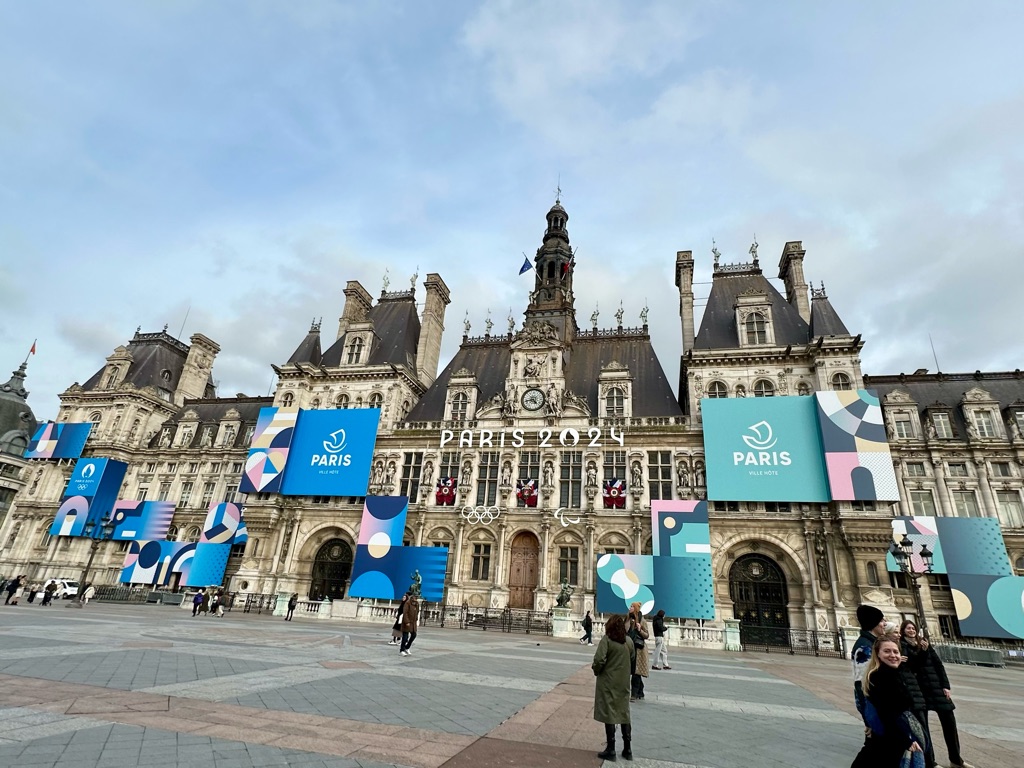




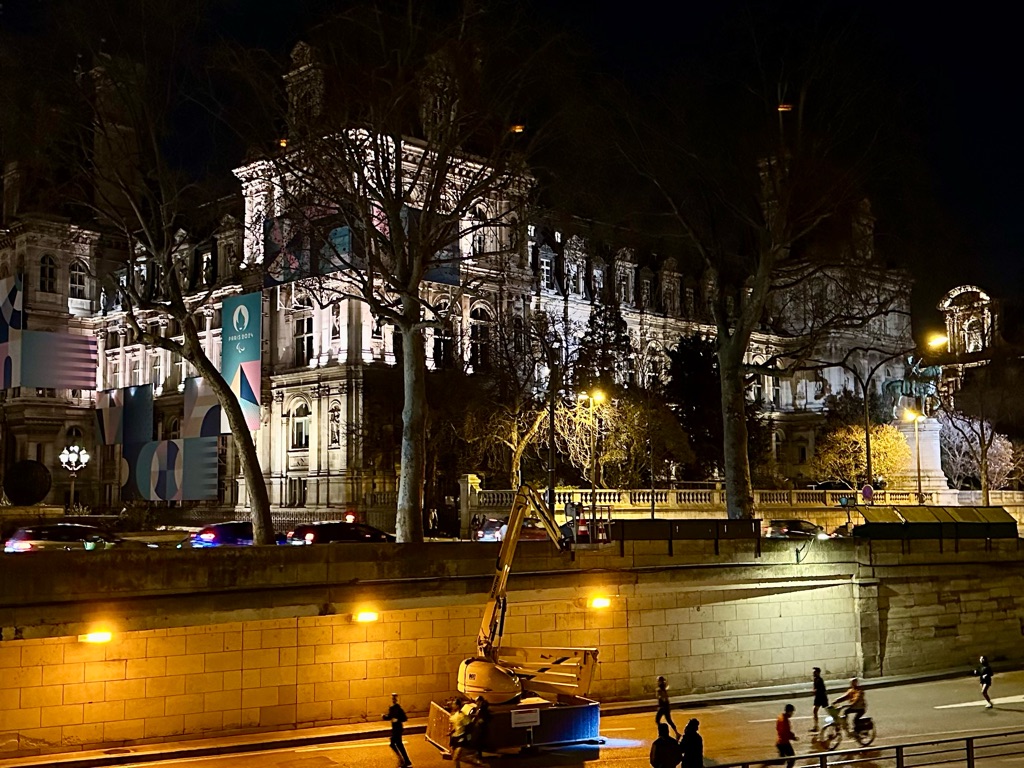
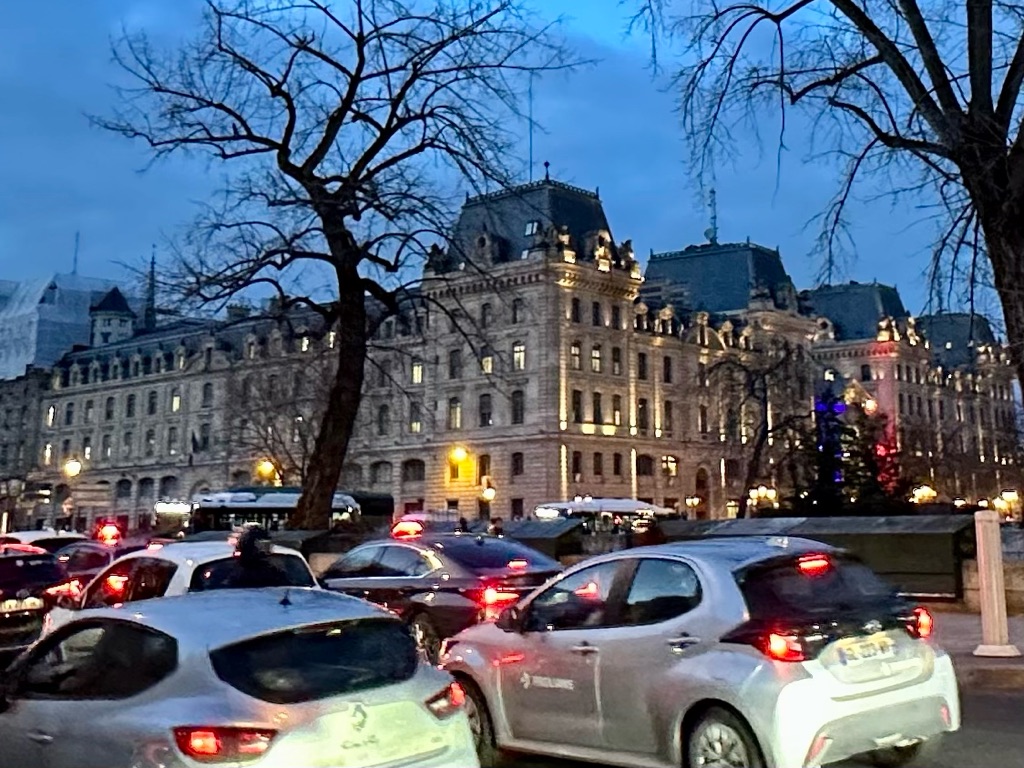
Today we not only saw many different parts of Paris but all kinds of traffic as well. We have had some great bus drivers.
Paris was first settled on the banks of the Seine in the 3rd century BC by Celtic fishermen known as Parisii. Of course, the Romans came along in 52 BC and found the city of Lutetia.
Around the time that the city was threatened by Attila the Hun out of the North, the people changed the name to Paris after the original fishermen.
The city was saved from attack and grew prosperous due mainly to silver. Around 1500, the city was the largest in Western Europe. And with it came a long line of Kings.
One interesting fact about the Louvre Museum today, if you only spend 3 seconds in front of each piece art it would take about 3 months to see everything. Needless to say it is enormous!


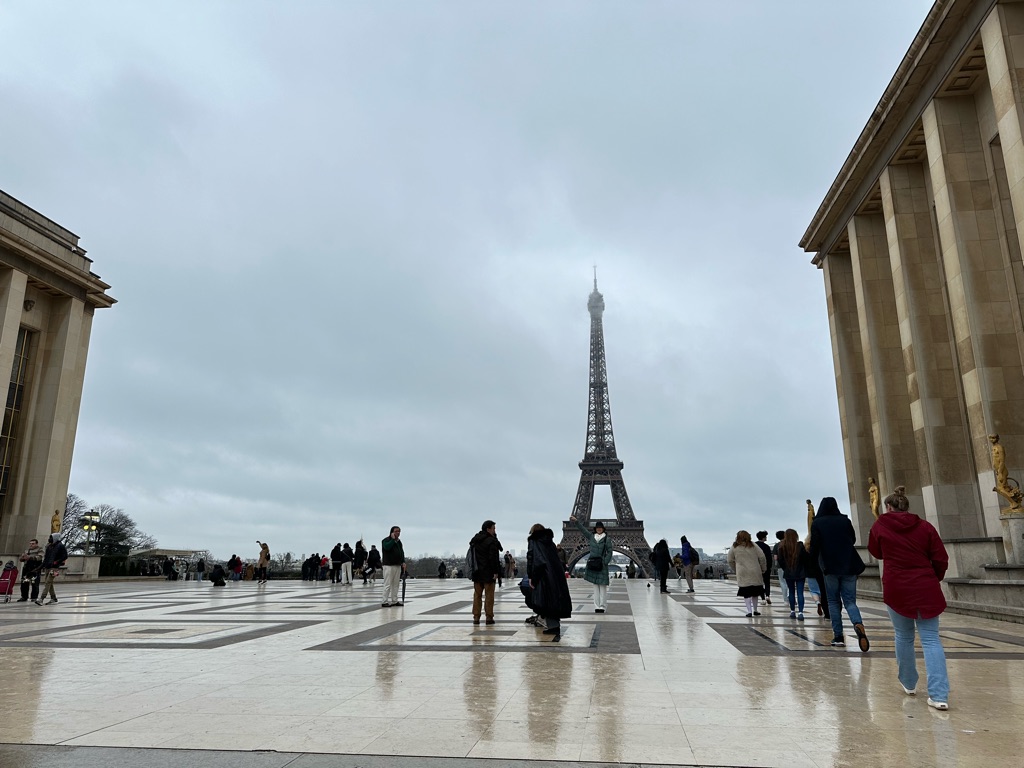
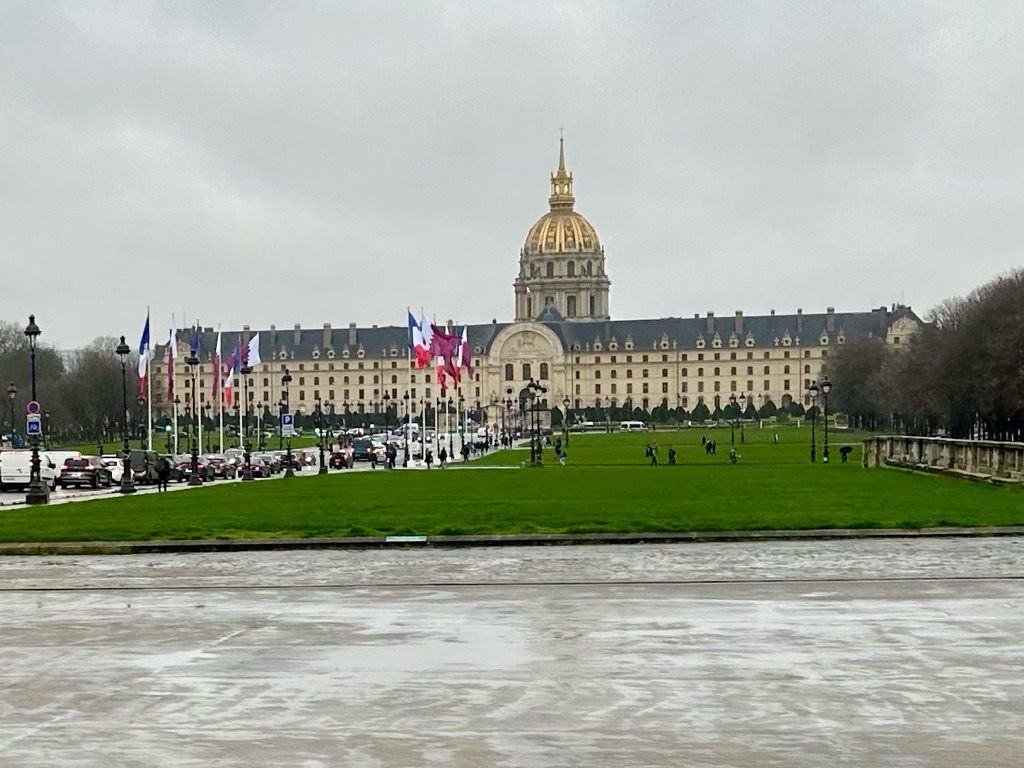
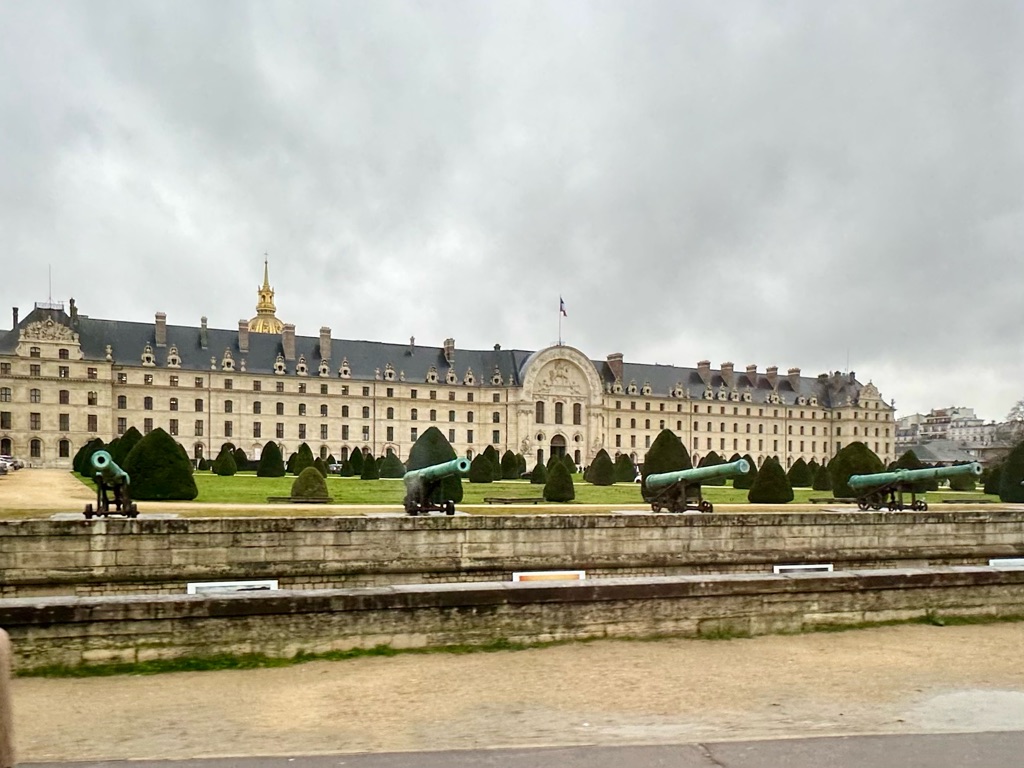

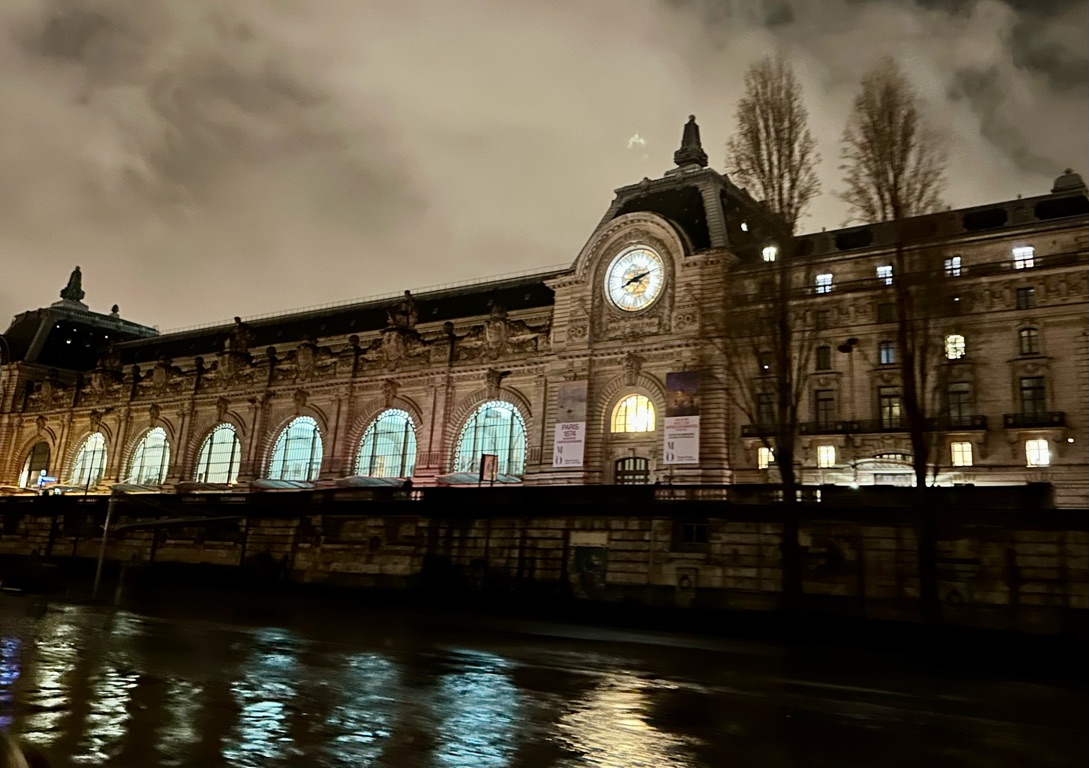
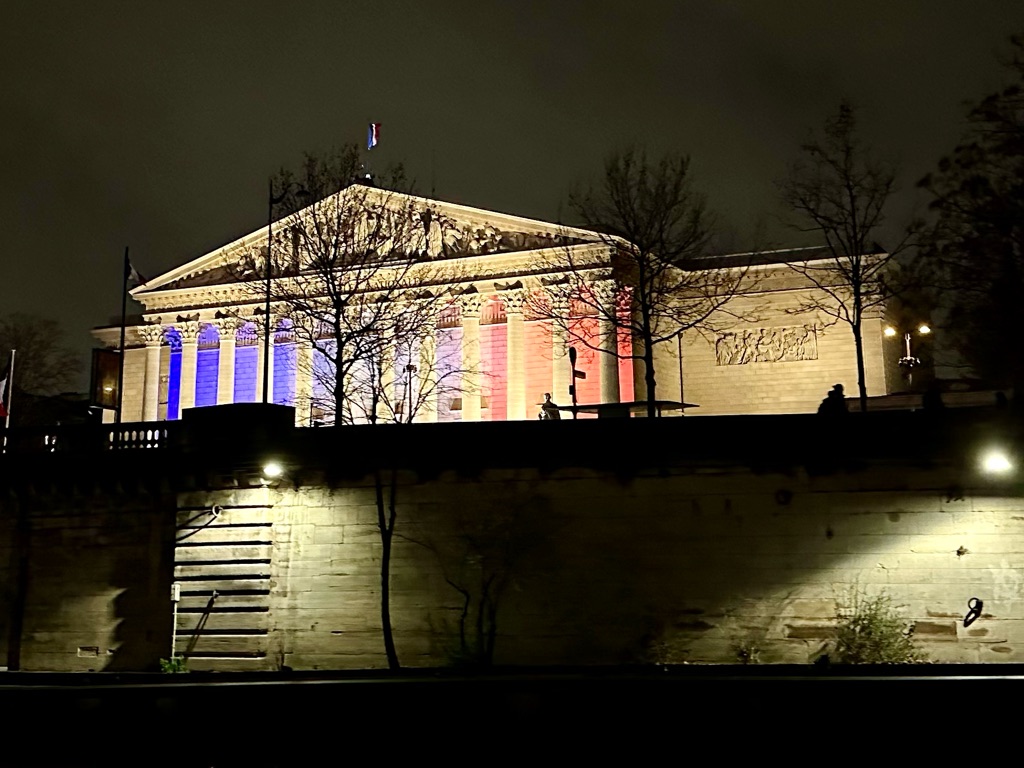

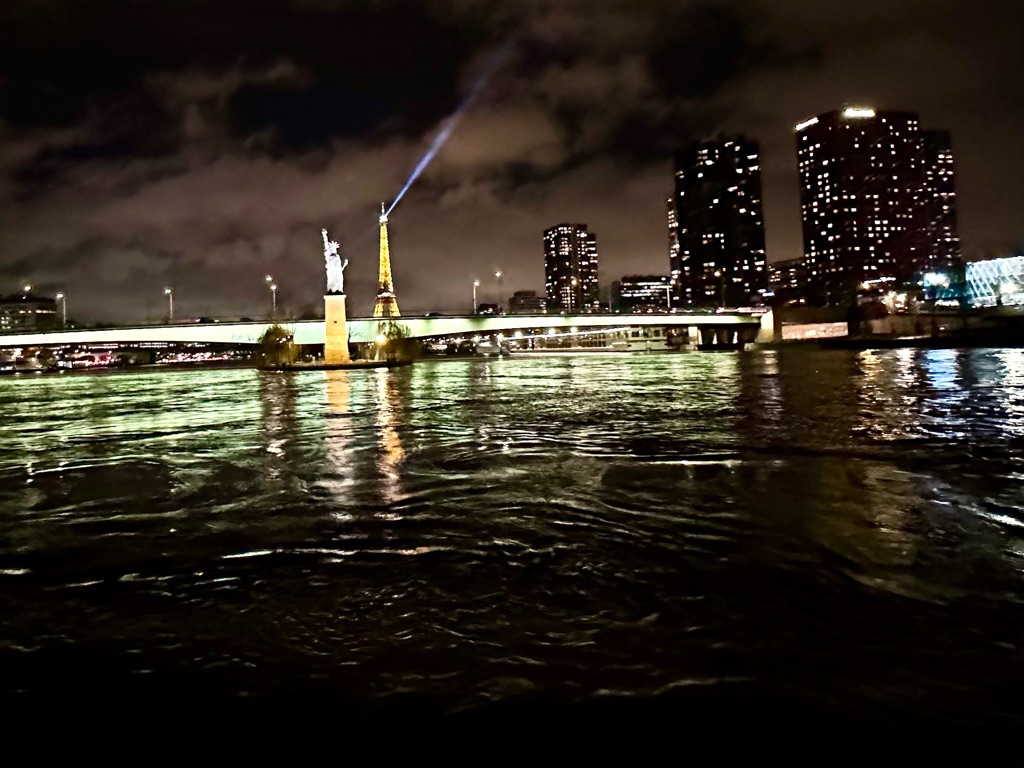
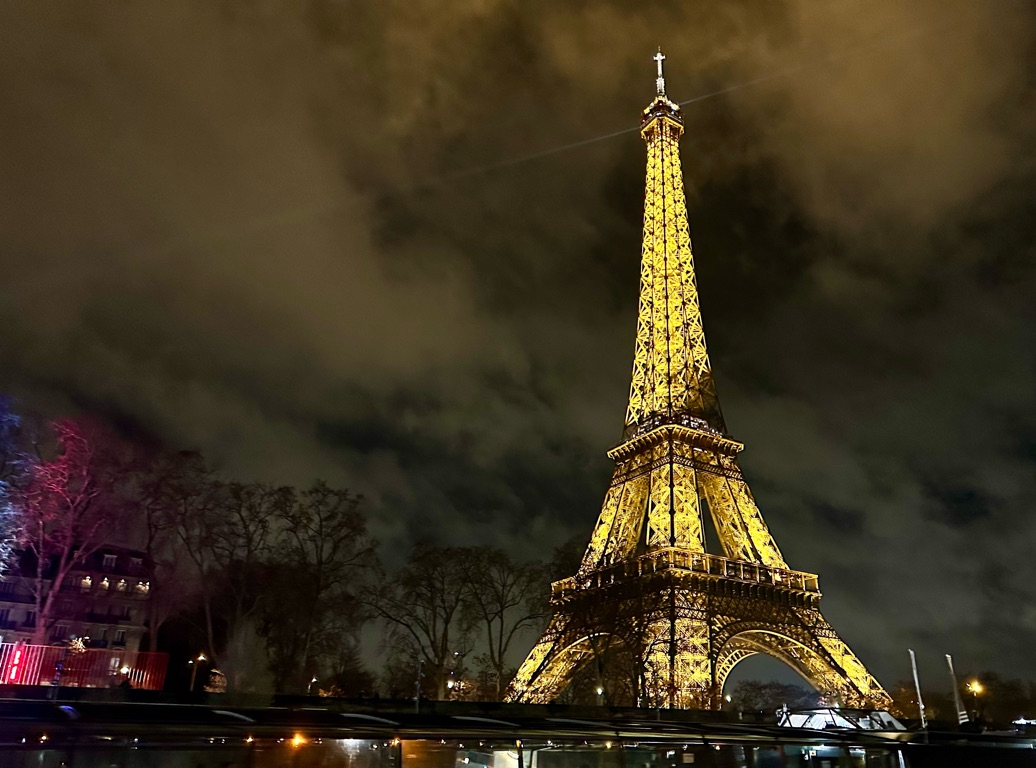
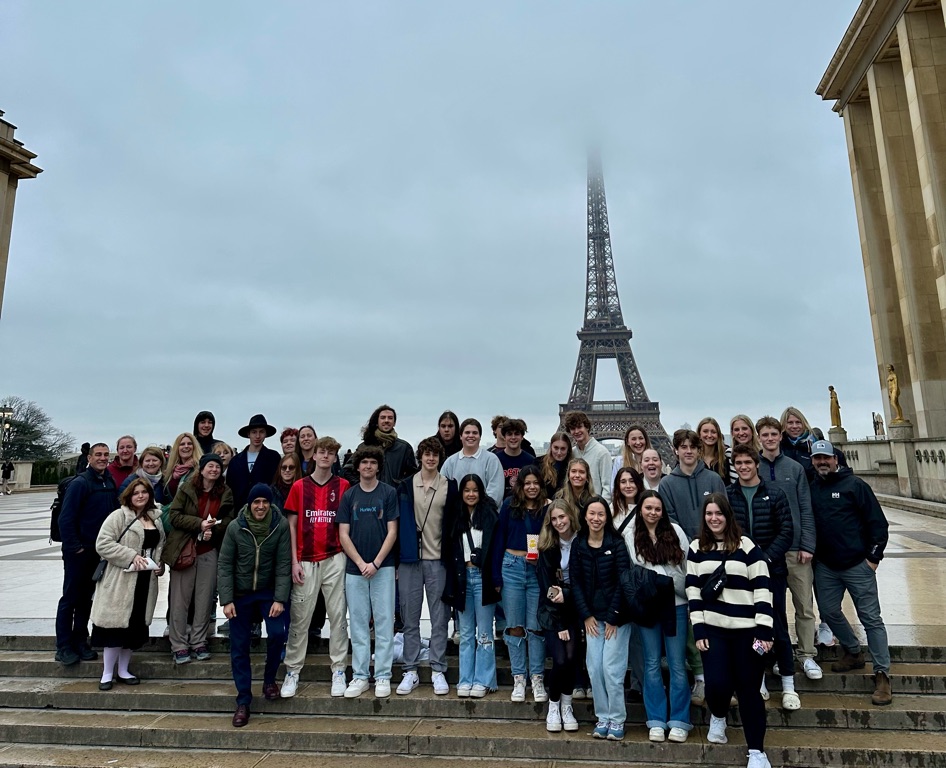
Unfortunately, it was cold and rainy in Versailles, which didn’t allow everyone to enjoy the grandeur of the Palace gardens. But the whole group had a visit inside.
Versailles started as a hunting lodge of Louis XIII. His son, Louis XIV the Sun King, transformed the whole city into his Court and Palace, moving everything out of the Louvre and Paris.
The capital stayed there until Louis XVI and Marie Antoinette were over thrown by the starving people of Paris. This is when Napoleon became Emperor until 1815 and his second exile. Louis XVIII, brother of Louis XVI, took back power but kept the capital in Paris at that point. (Ask your student if they know why there was never a Louis XVII. It is an interesting story.)
Afterwards, Versailles became a Museum, but it is well known from the signing of the Treat of Versailles that ended WWI.
There was a ton of renovations happening all over the grounds due to the summer Olympics. Horse riding competitions are taking place on the grounds of Versailles.


